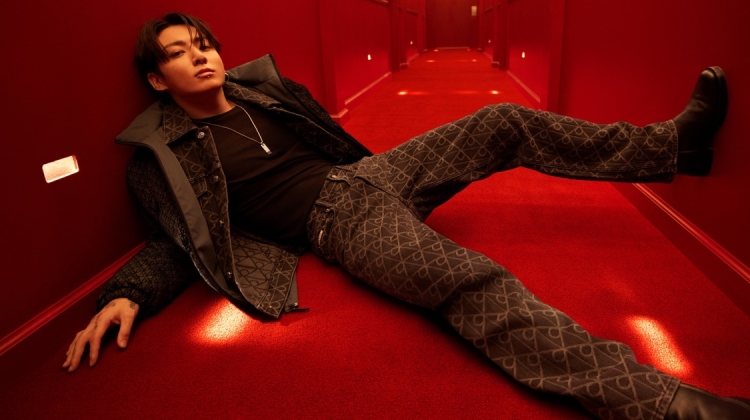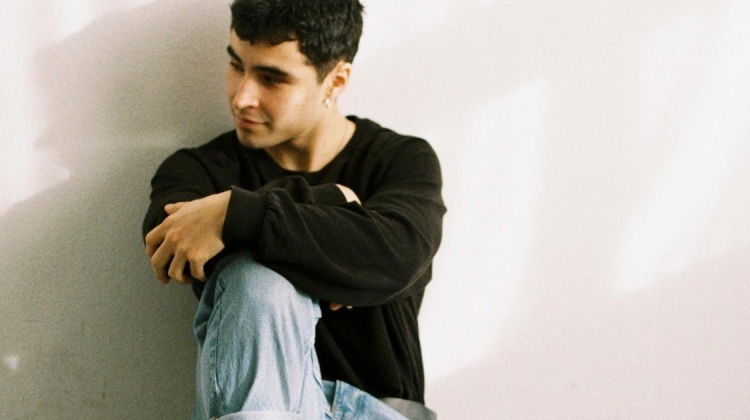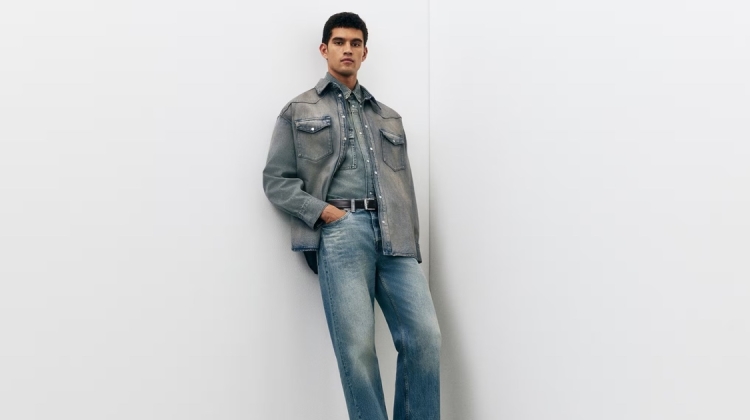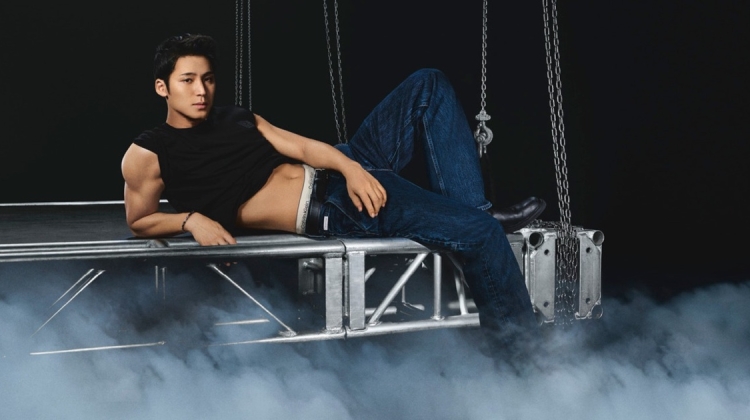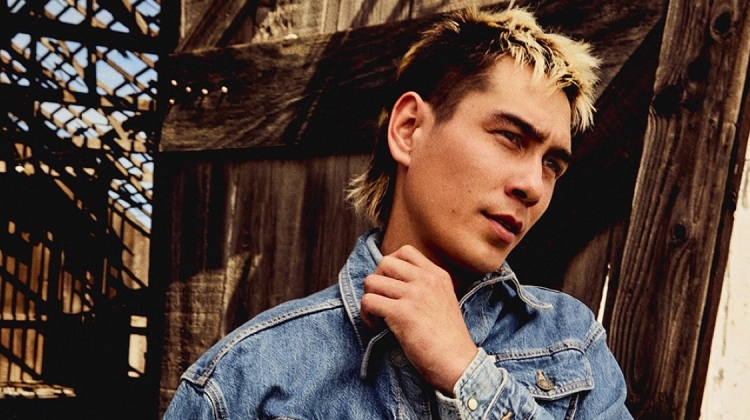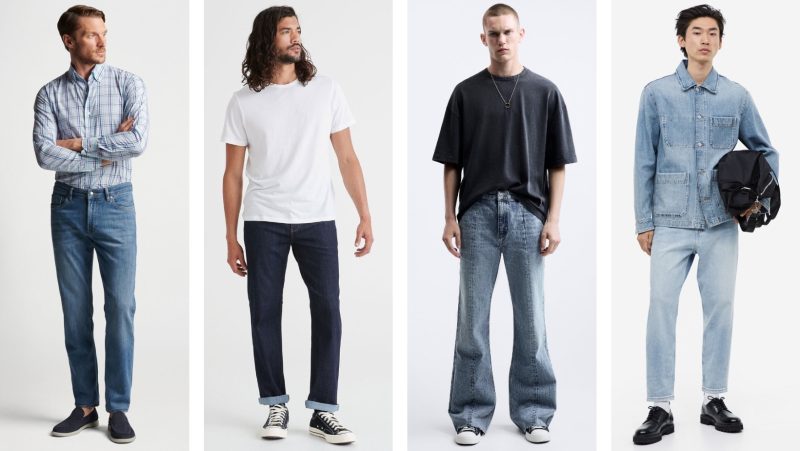
The different types of jeans for men span decades of shifts in fashion, but denim has never stepped out. A well-fitting pair holds its ground through changing trends and remains a daily essential.
Look at jeans history and you’ll find roots in 19th-century workwear, later picked up by screen icons and subcultures that turned utility into style. That legacy still shows up in the cuts we wear today.
The question now is how should jeans fit. They should follow your shape without pulling or sagging, unless you’re aiming for something oversized. Straight, skinny, loose, or bootcut. Find what suits your build and let the rest fall into place.
the Types of Jeans for Men
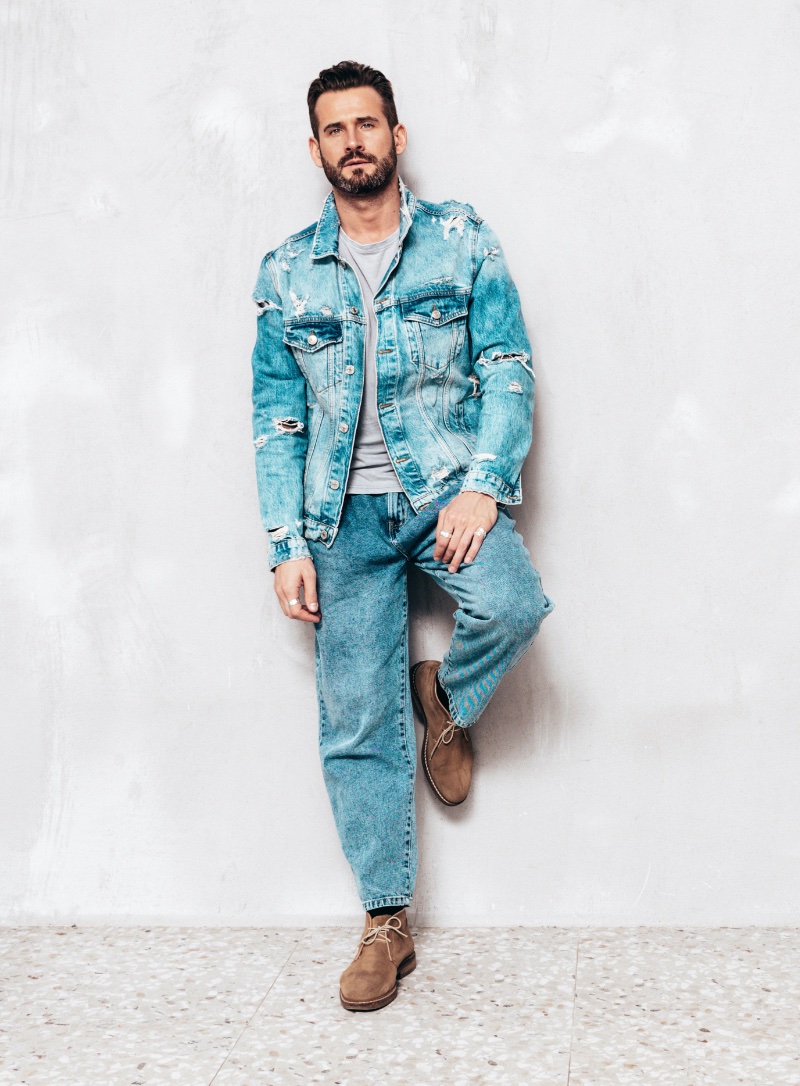
Before getting into the different types of jeans, it helps to know the basics. A few core elements shape how jeans look and feel:
- Denim Material: Traditional denim is a durable cotton fabric known for its strength and breathability. Many modern jeans now include fabric blends like elastane for stretch or linen for a lighter, more breathable feel.
- Fit: Fit refers to how jeans sit on the body from the waist through the thigh. It affects comfort and how the jeans work with the rest of your outfit. A timeless regular fit like jeans for men from Marcs shows how this style is quite versatile.
- Wash: Wash describes the denim’s color and surface finish. Choices range from raw, untreated denim to dark indigo, stonewashed blue, black, grey, or bolder colors like green or red.
- Cut: Cut refers to the leg shape from hip to ankle. It influences the overall style, whether you’re after something laid-back, sharp, or classic.
Different Fits of Jeans
Move through the range of denim fits, where each style has its place and shapes the way trends take form.
Regular Fit Jeans
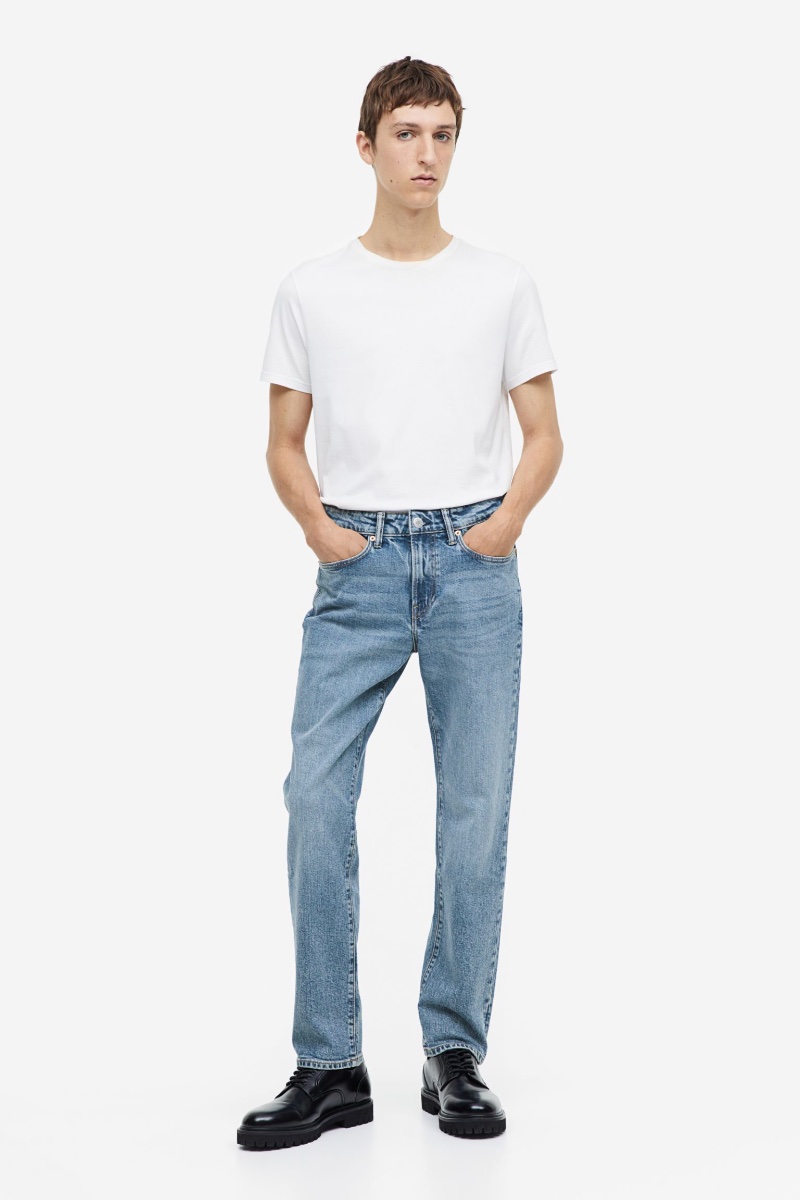
Regular-fit jeans sit at the core of classic denim. They feature a straight cut from hip to ankle, delivering a clean shape that works across styles and seasons. This fit stays neutral. Not too tight, not too loose.
With a mid-rise and a wider leg opening, regular-fit jeans suit men with average builds and anyone who falls between slim and athletic.
Slim Fit Jeans
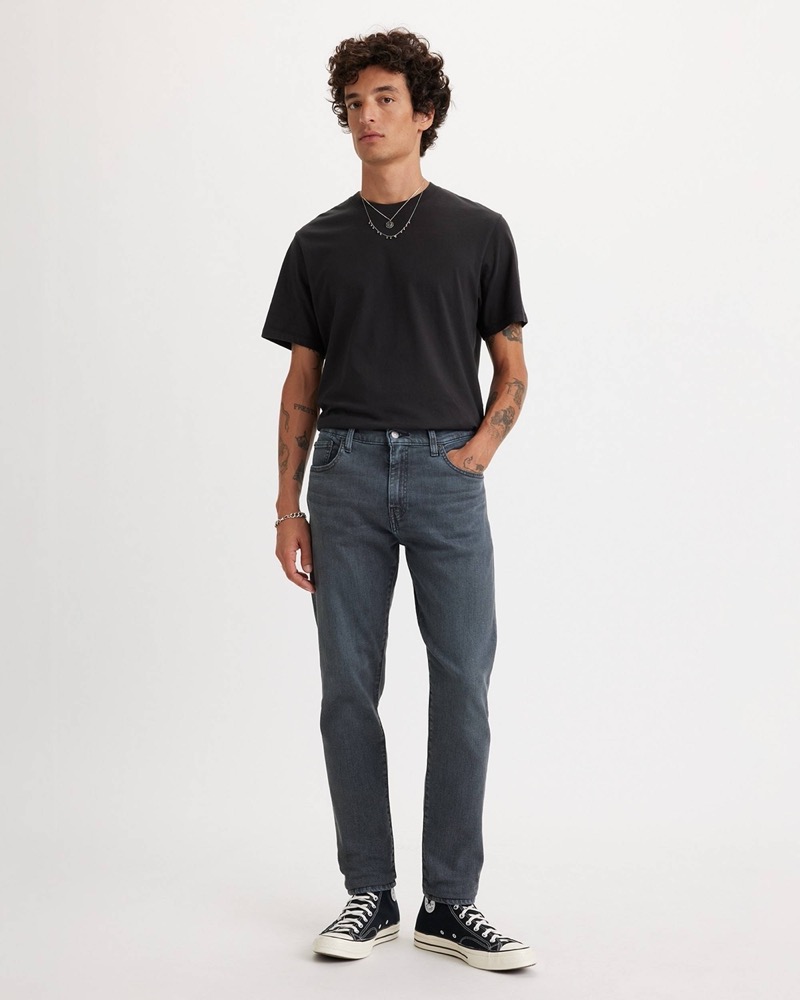
Slim-fit jeans work well for men with lean or athletic builds, following the body’s shape without feeling restrictive. They offer a sharper look than relaxed styles, with a close fit through the thighs and a tapered leg that narrows toward the ankle.
The result is a modern silhouette that still feels easy to wear.
Skinny Jeans
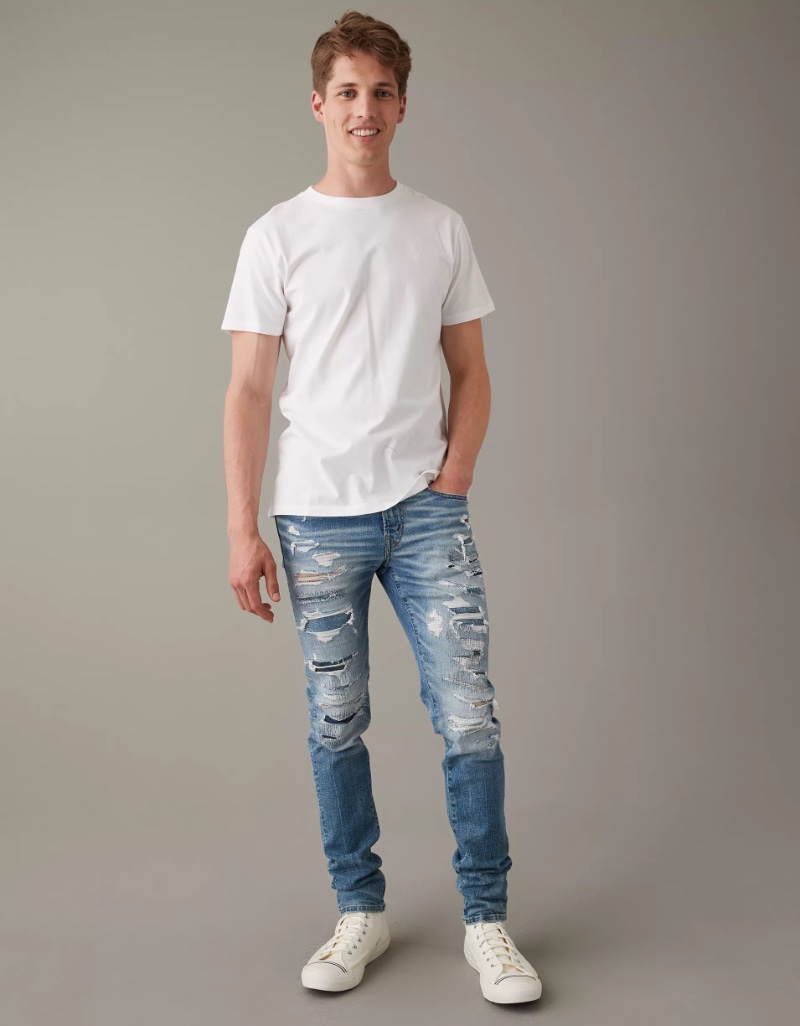
Skinny jeans take the slim fit further, wrapping close from waist to ankle for a sharp, fitted look. They create a sleek silhouette and often make a bold visual statement.
While this cut works best on lean builds, it pairs well with relaxed knits, untucked button-ups, or longer coats that offset the tight fit and create visual balance.
Relaxed Fit Jeans
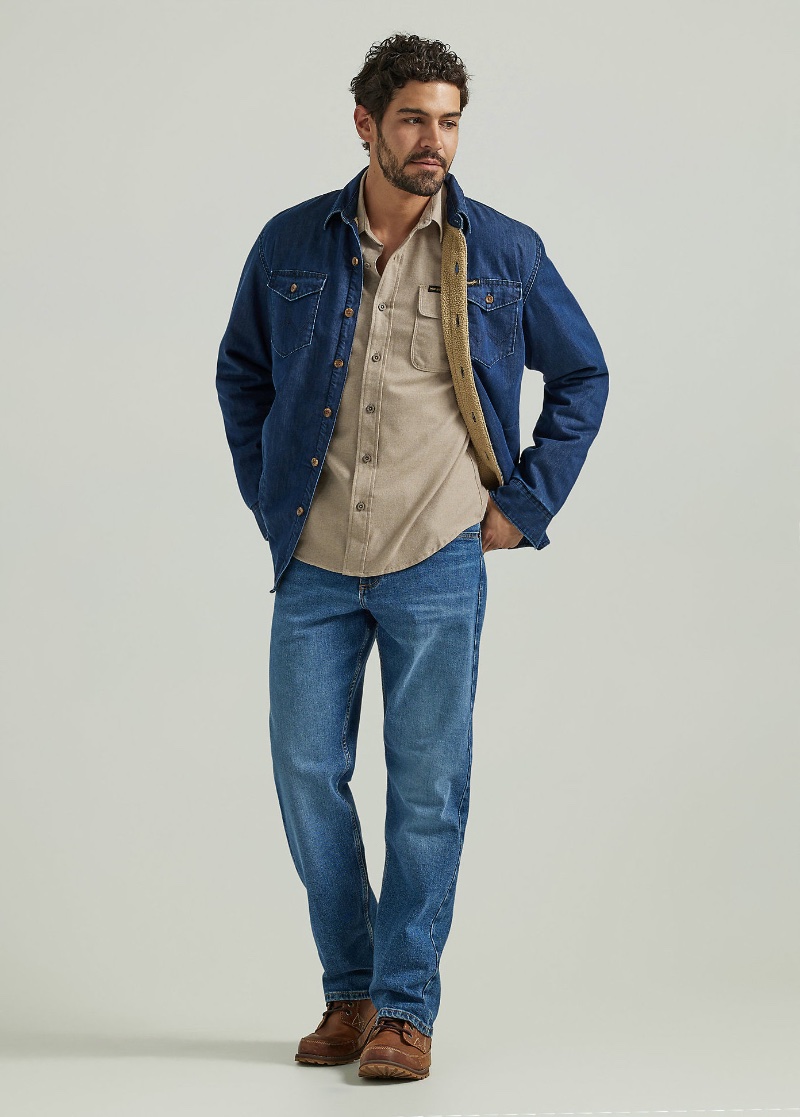
Relaxed fit jeans are designed for ease. They offer more room through the thigh and calf, making them ideal for men with a broader build or anyone who values comfort.
The looser silhouette adds weight to casual outfits and works well with heavier layers or chunkier footwear.
Loose Fit Jeans
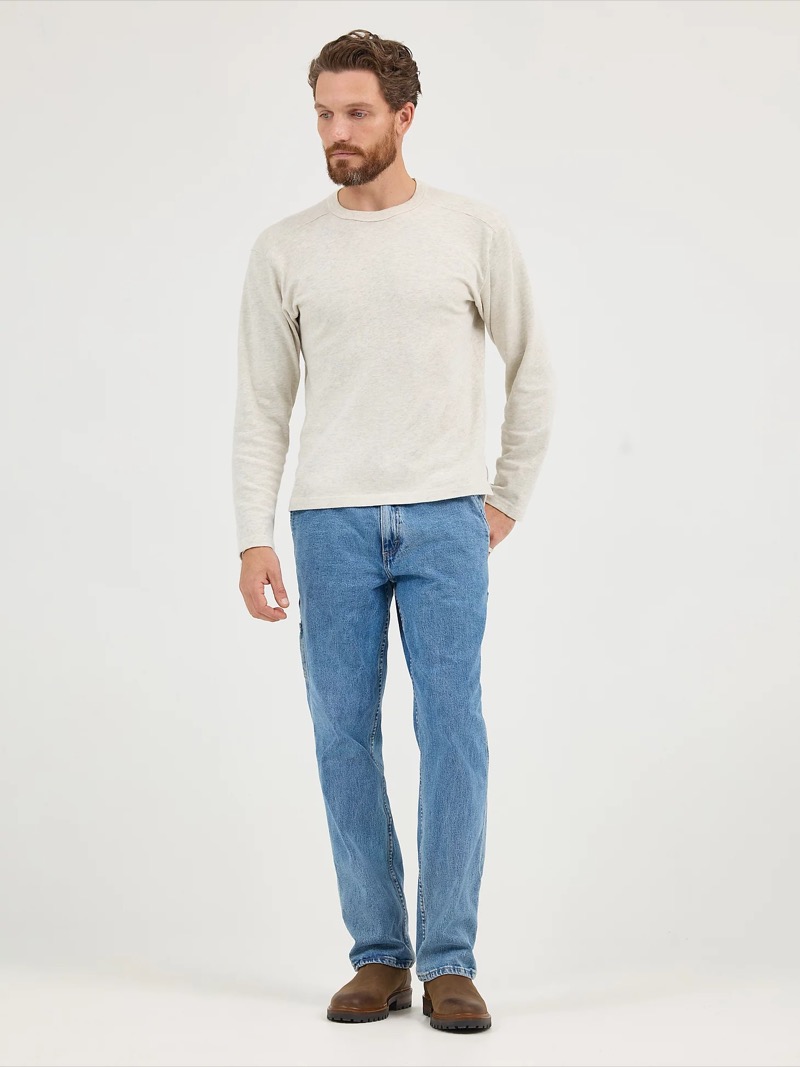
Loose-fit jeans bring extra room across the seat and thighs, giving the body space to breathe. They sit away from the skin, making them a practical choice for larger builds or anyone leaning into a laid-back look.
The extra volume gives them range, whether styled with streetwear, workwear, or relaxed layers.
Bootcut Jeans
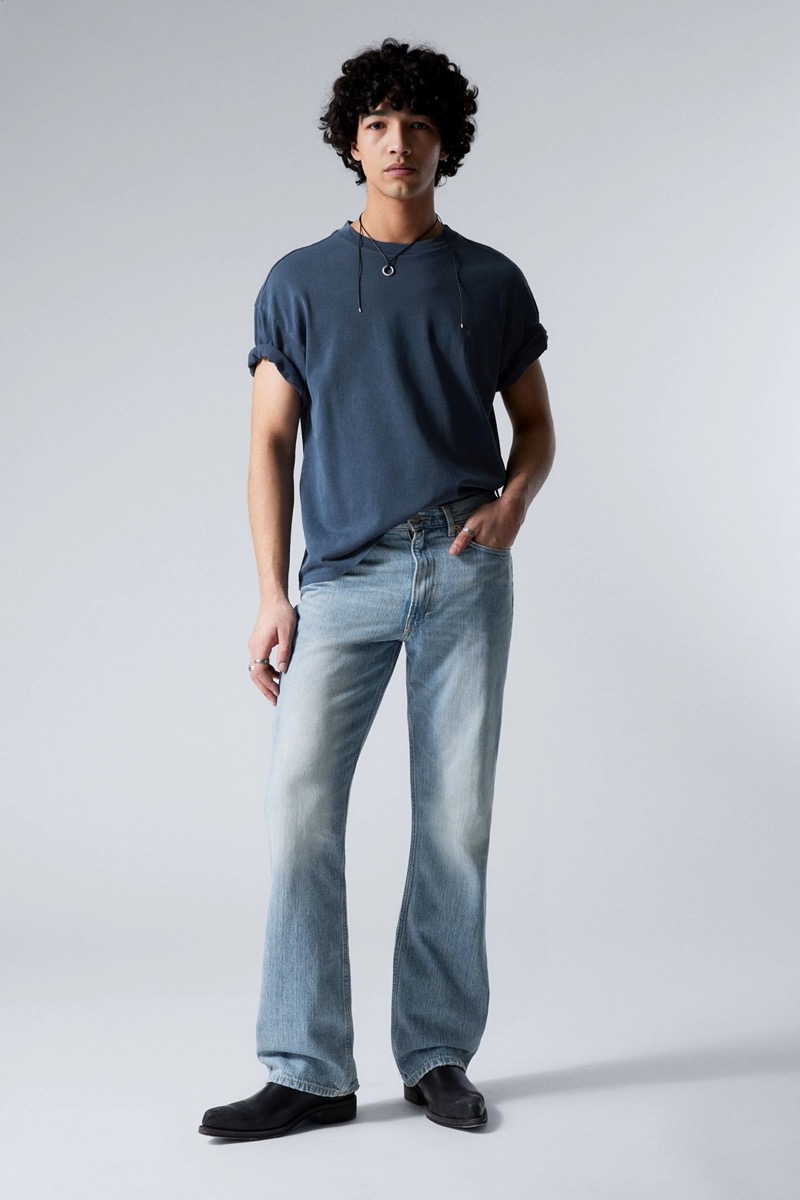
Bootcut jeans started with utility. Designed to fit over cowboy boots, they feature a subtle flare from the knee down that works with wider footwear. Over time, they’ve moved from rodeo to street, settling in as a casual staple.
They suit men who favor a rugged, relaxed style and pair well with heavier boots, denim jackets, or Western-inspired shirts.
Tapered Jeans
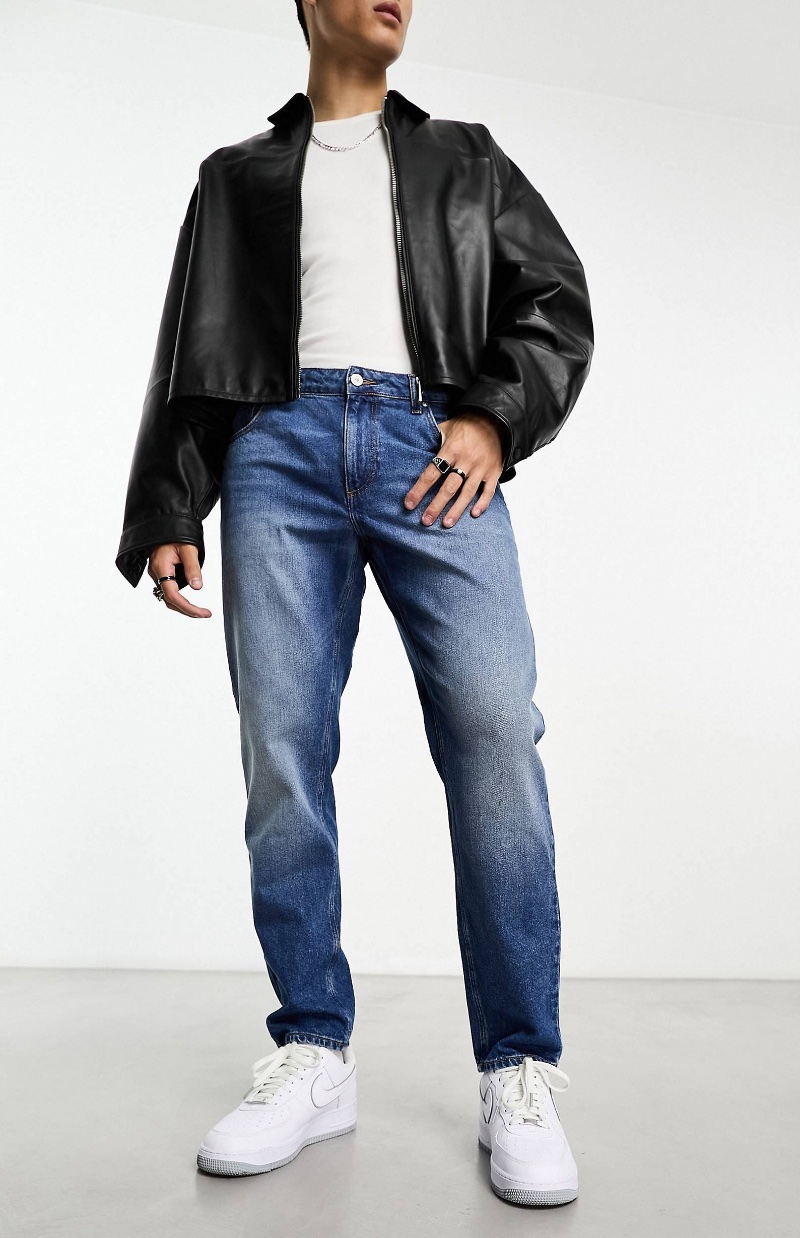
Tapered jeans balance comfort up top with a sharper finish below. They offer room through the waist and thighs, then narrow gradually toward the ankle for a cleaner finish.
This fit works well for men with stronger legs who want a streamlined shape without the squeeze of a skinny cut.
Slim Straight Jeans
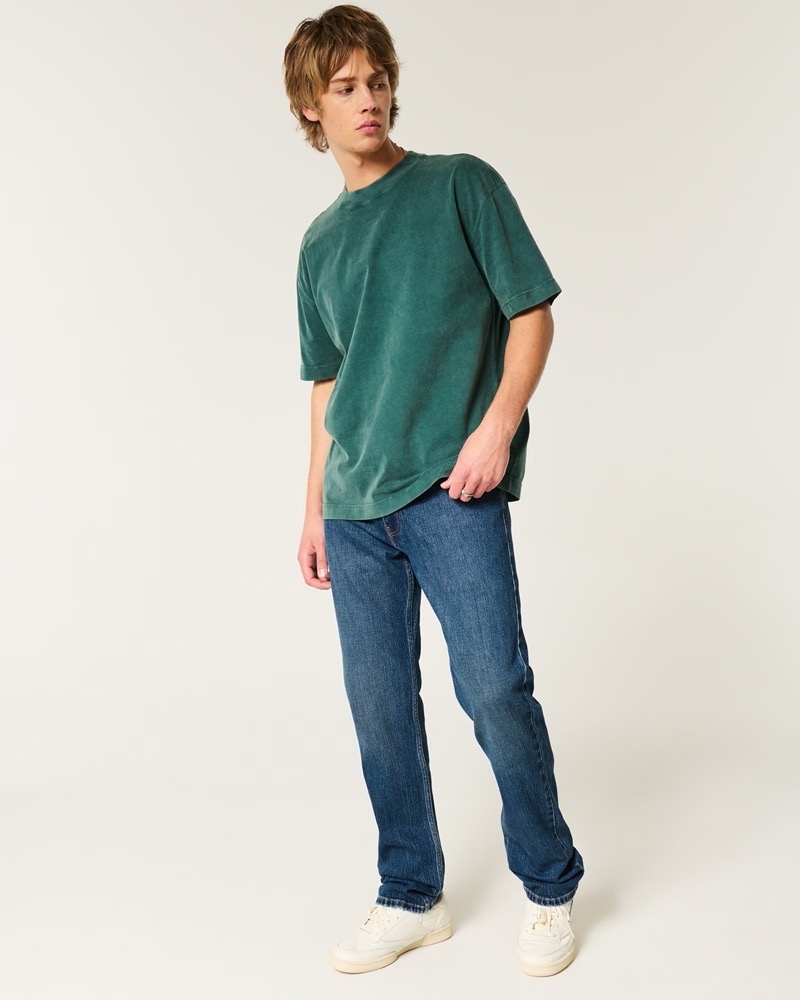
Slim straight jeans combine the close fit of slim jeans with the clean line of a straight leg. They taper slightly through the thigh, then fall straight from the knee down, creating a balanced shape that works across styles.
Straight Taper Jeans
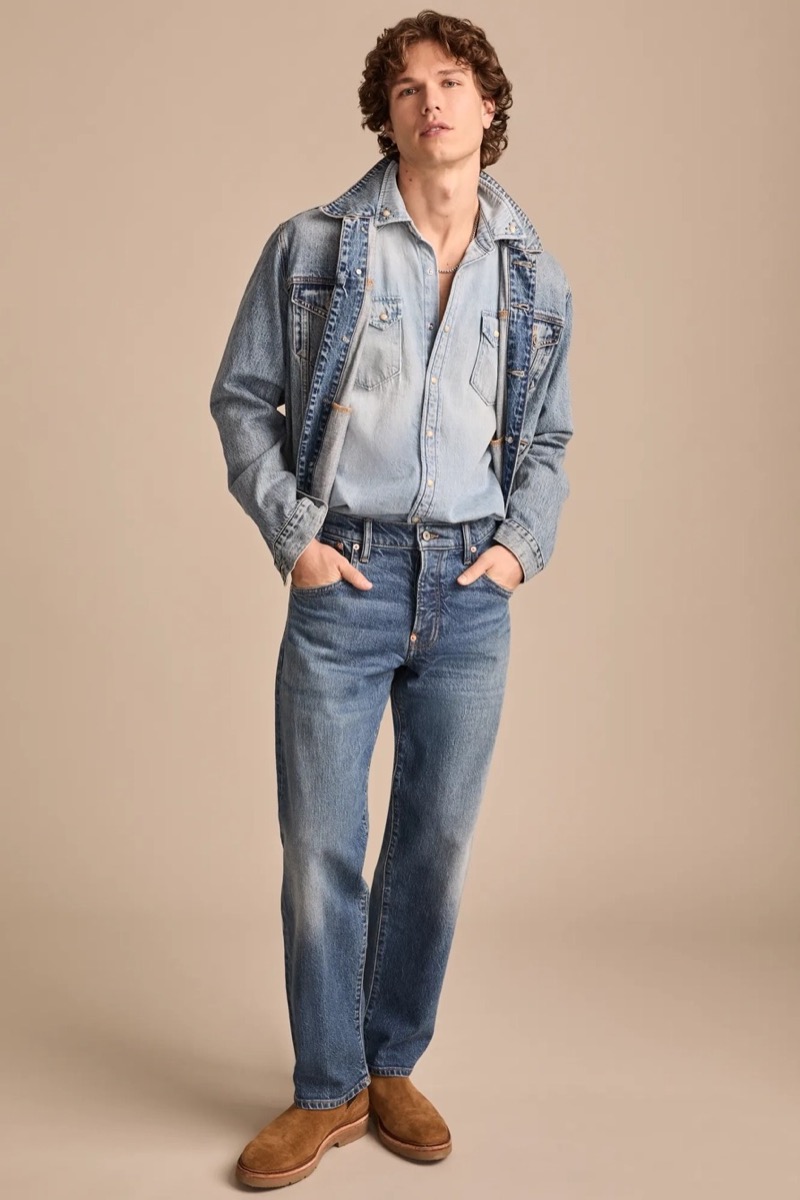
Straight taper jeans offer a modern update to the classic straight cut. They run straight from the waist through the thigh, then narrow past the knee for a refined shape.
This fit works well for men who need room up top but prefer a closer fit through the lower leg.
Carrot Fit Jeans
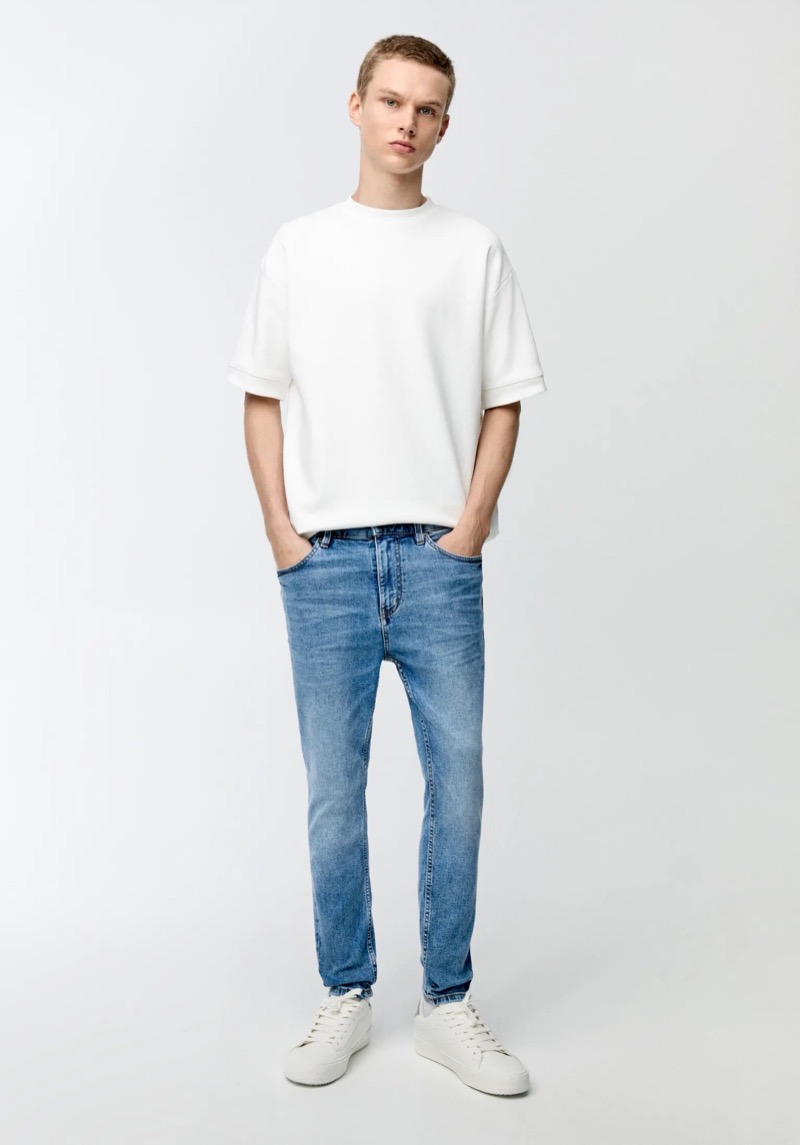
Carrot fit jeans live up to their name with a shape that starts wide at the top and tapers down to the ankle. They offer more room through the hips and thighs, then narrow for a clean finish.
This cut suits a range of body types, especially men with broader or muscular builds. It delivers comfort and shape without looking bulky.
Dad Jeans
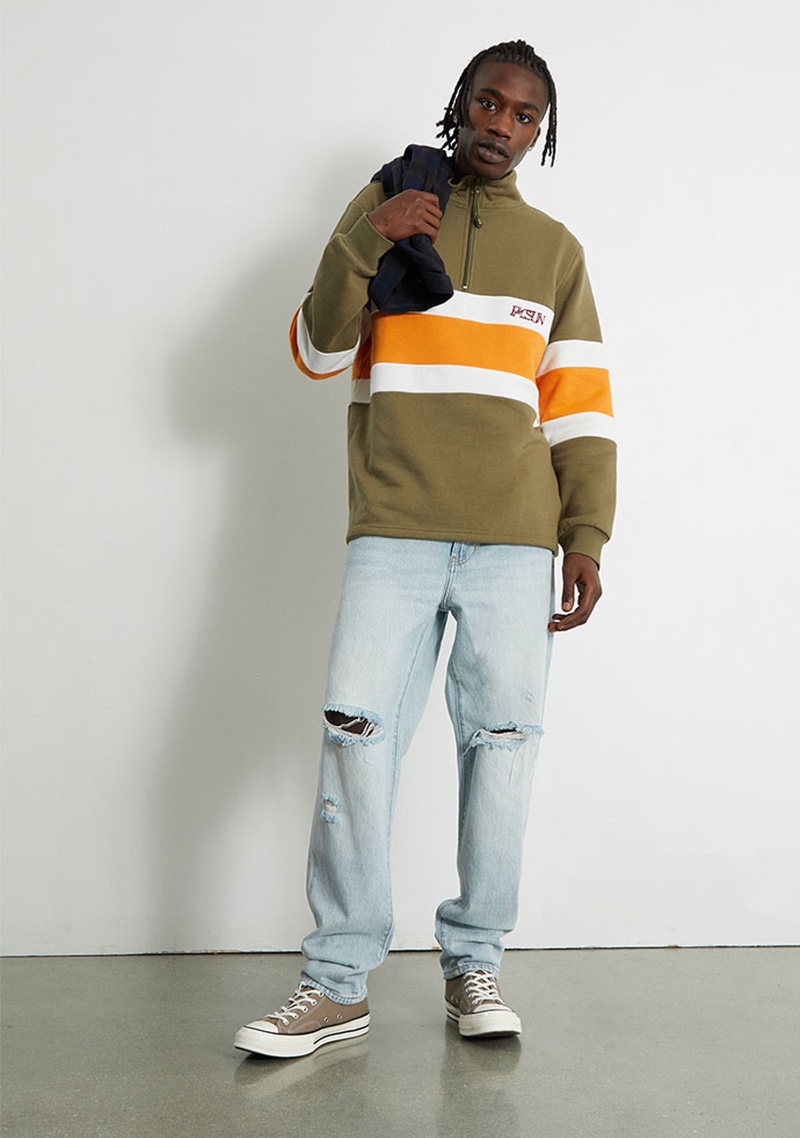
Turning back the clock on fashion, dad jeans are making a strong return. These high-waisted, slightly relaxed-fit jeans trace back to the late ’80s and early ’90s, standing apart from today’s slimmer silhouettes.
Rooted in vintage appeal, this look has become a staple of modern dad style. Worn with a graphic tee, it channels nostalgia. Paired with a tucked-in shirt and loafers, it sharpens up while holding on to its laid-back charm.
Athletic Fit Jeans
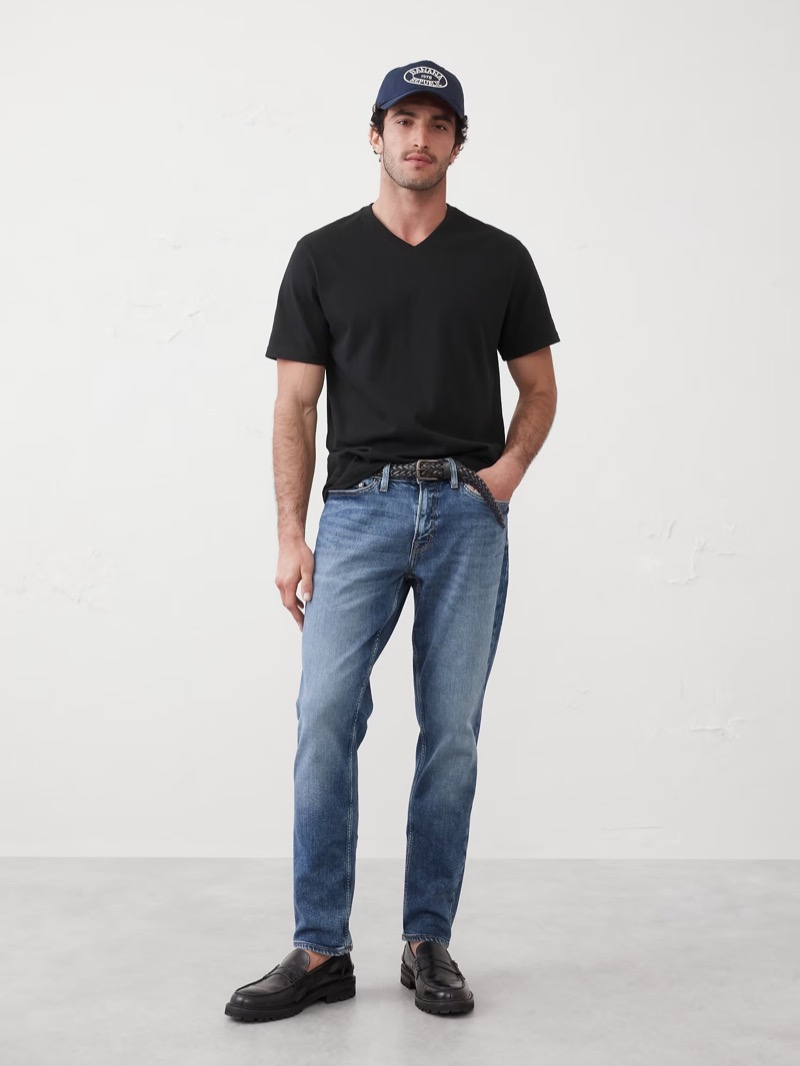
Athletic fit jeans feature a relaxed taper designed for men with muscular legs. They provide extra room through the seat and thighs, then narrow below the knee for a cleaner finish. The cut highlights strength while keeping the overall shape controlled and sharp.
Baggy Fit Jeans
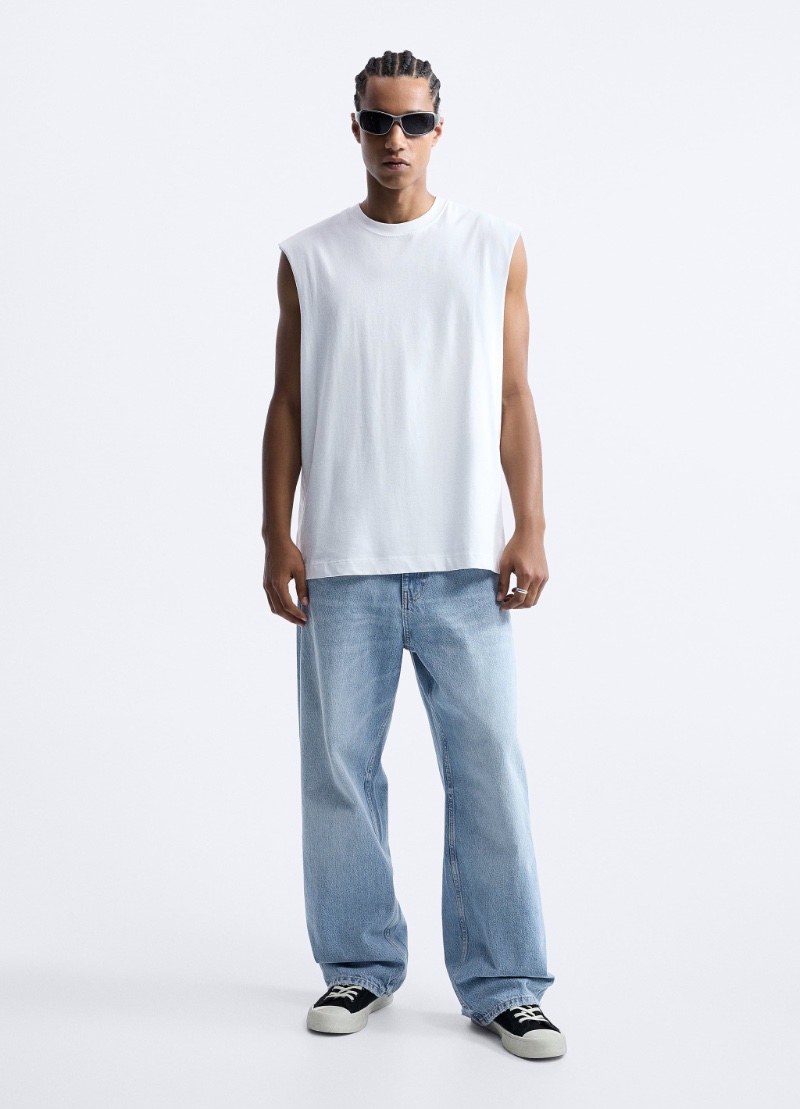
Baggy jeans have stepped back into the spotlight, shaking up the usual denim rules. With an oversized fit from waist to ankle, they bring together laid-back comfort and a more experimental edge.
A well-styled baggy jeans outfit often pairs the volume below with a cleaner top. Simple tees, zip hoodies, or cropped jackets help keep the proportions sharp. Ideal for those who favor standout pieces, this fit adds personality with minimal effort.
Cropped Jeans
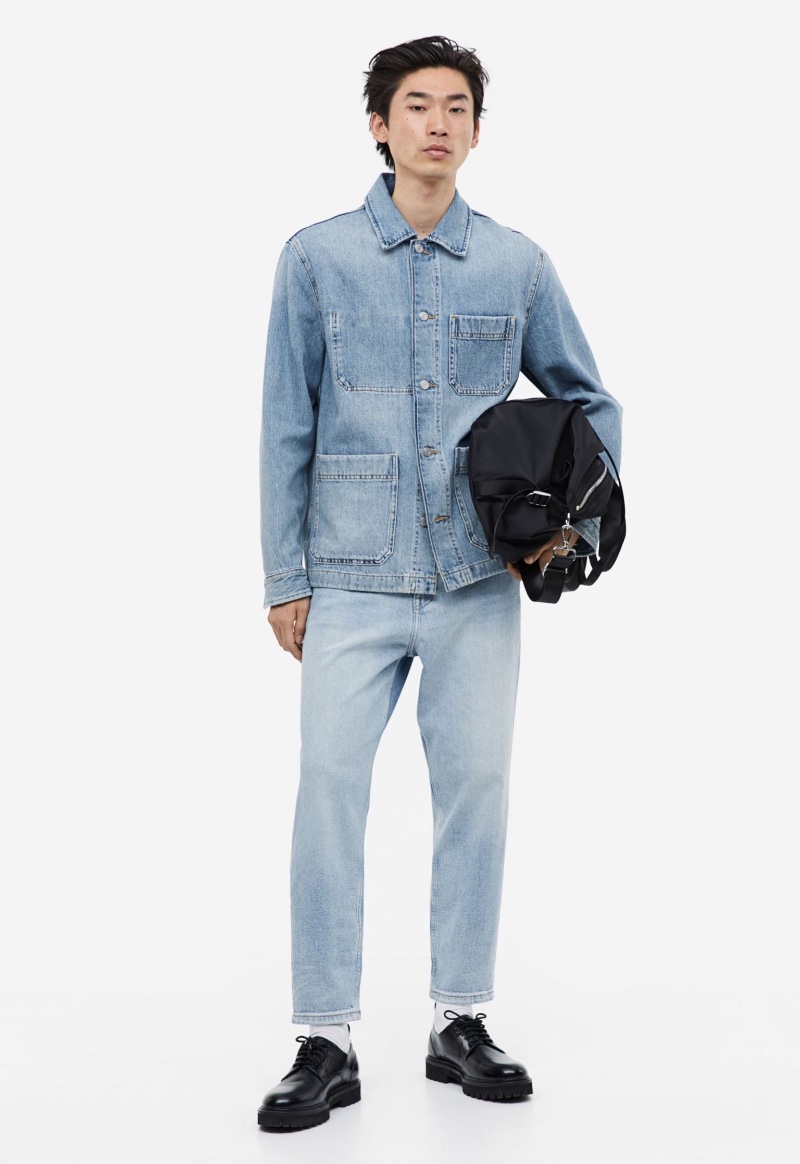
Cropped jeans bring a sharp finish when you want to add contrast or spotlight your sneakers. Ending above the ankle, they break from tradition and shift focus downward.
By drawing attention to your footwear, cropped jeans give you space to play with bolder choices and add a subtle twist to everyday looks.
Understanding Jean Rise
Rise plays a key role when choosing jeans. It refers to the distance from the crotch seam to the top of the waistband and affects both comfort and how the jeans sit on the body. The three main types are low rise, mid rise, and high rise, each offering a different fit and look.
Low Rise
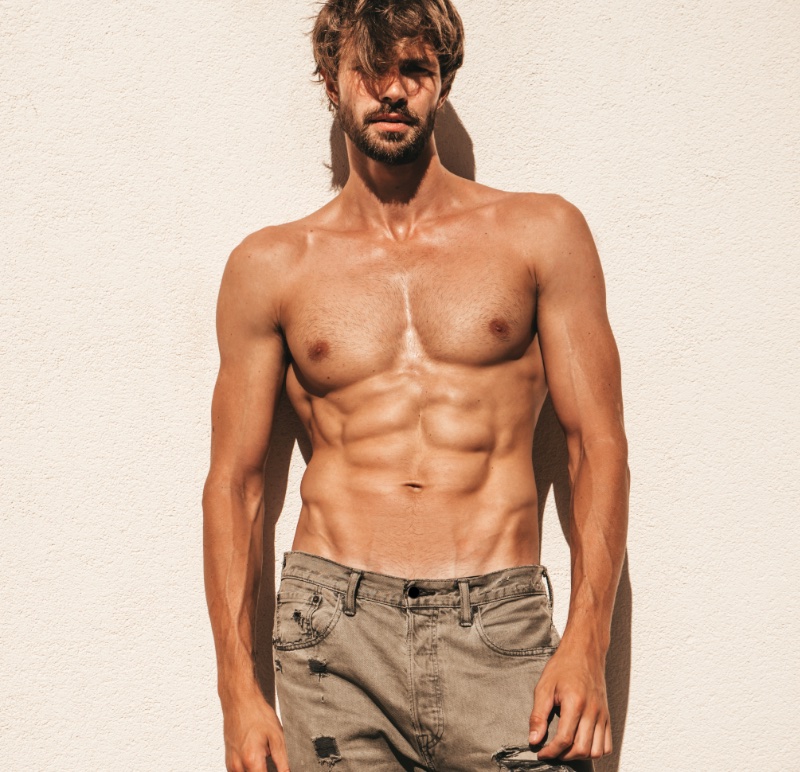
In the early 2000s, low-rise jeans dominated men’s fashion. Sitting a few inches below the navel, they delivered a casual, rebellious look that became a signature of the era.
Today, they still hold appeal for lean builds and those who favor a laid-back approach. However, low-rise jeans come with a few challenges.
They tend to shift lower when sitting or bending, which can reveal more than intended. For anyone who prefers a tucked-in shirt, the shorter rise and shallow zipper often make the fit look less polished.
Mid Rise
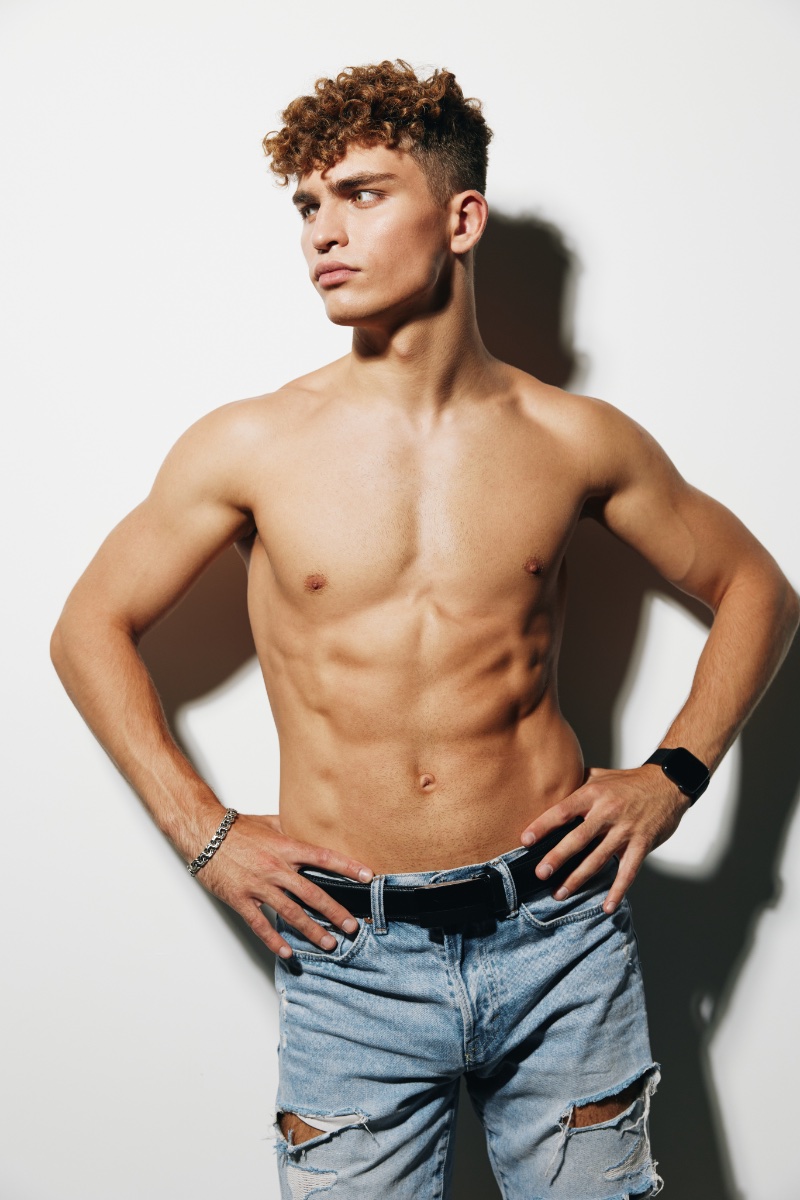
Mid-rise jeans are the steady option in everyday denim. Sitting just below the navel, they offer a reliable balance of comfort and shape. Their versatility makes them a solid choice for both casual looks and more put-together outfits, working across a range of body types.
One of their key strengths is how they visually extend the torso. For men with shorter upper bodies, mid-rise jeans help create a more proportional silhouette without drawing attention to the waistline.
High Rise
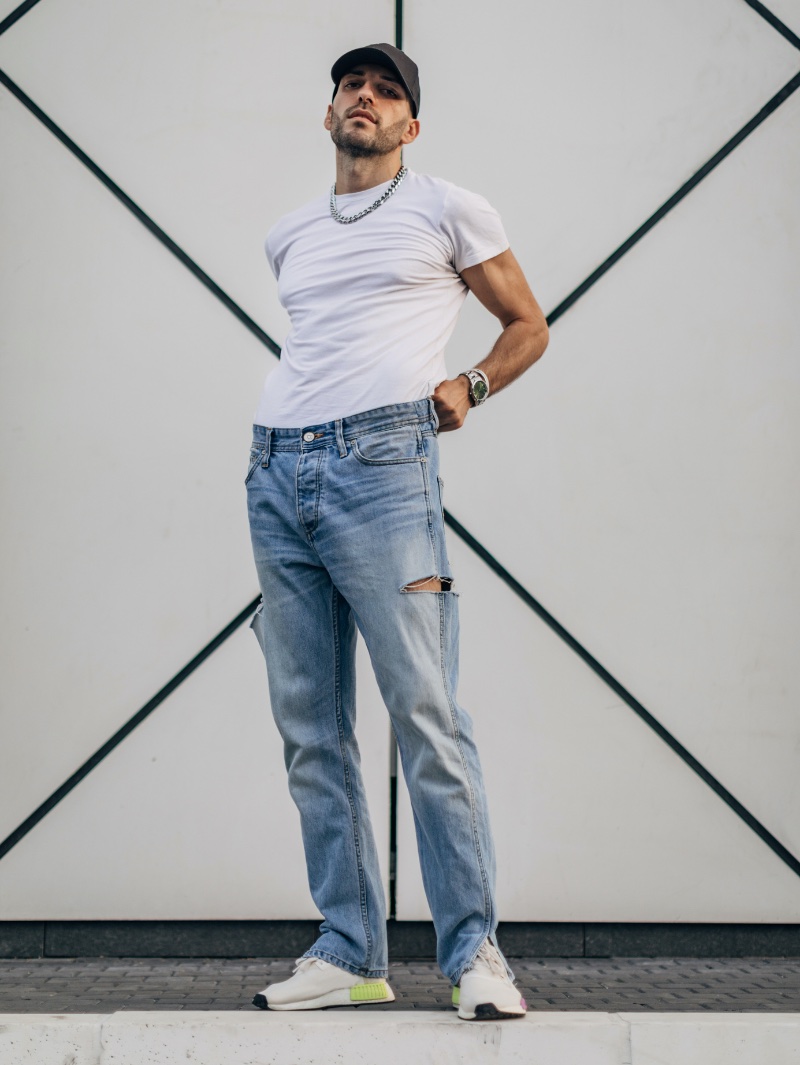
High-rise jeans, long linked to vintage style, are making a steady return. The waistband sits at or above the navel, creating a composed look. They work especially well for men with longer torsos or those who prefer a more classic silhouette.
One practical advantage is how well they handle tucked-in shirts. The higher rise and longer zipper help keep everything smooth and in place. They also offer a bit of coverage around the midsection, which can create a more streamlined appearance.
Different Types of Jean Cuts
In the world of denim, the cut refers to how jeans follow the body from the waist down. It plays a major role in both comfort and appearance, shaping the silhouette and setting the tone for your overall style.
Straight Cut
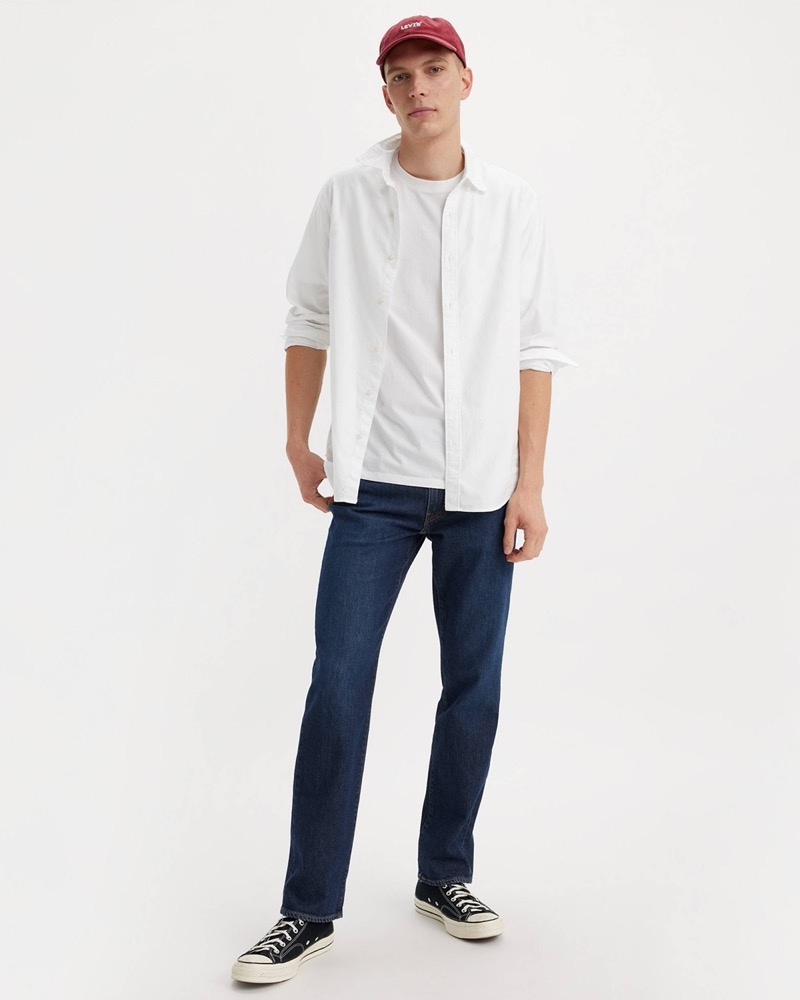
Straight cut jeans stay in steady rotation for a reason. With the same width from hip to ankle, they offer a balanced shape that works across body types and styles.
They avoid extremes. Not too loose, not too tight. Just a straightforward fit that gets the job done.
Bootcut
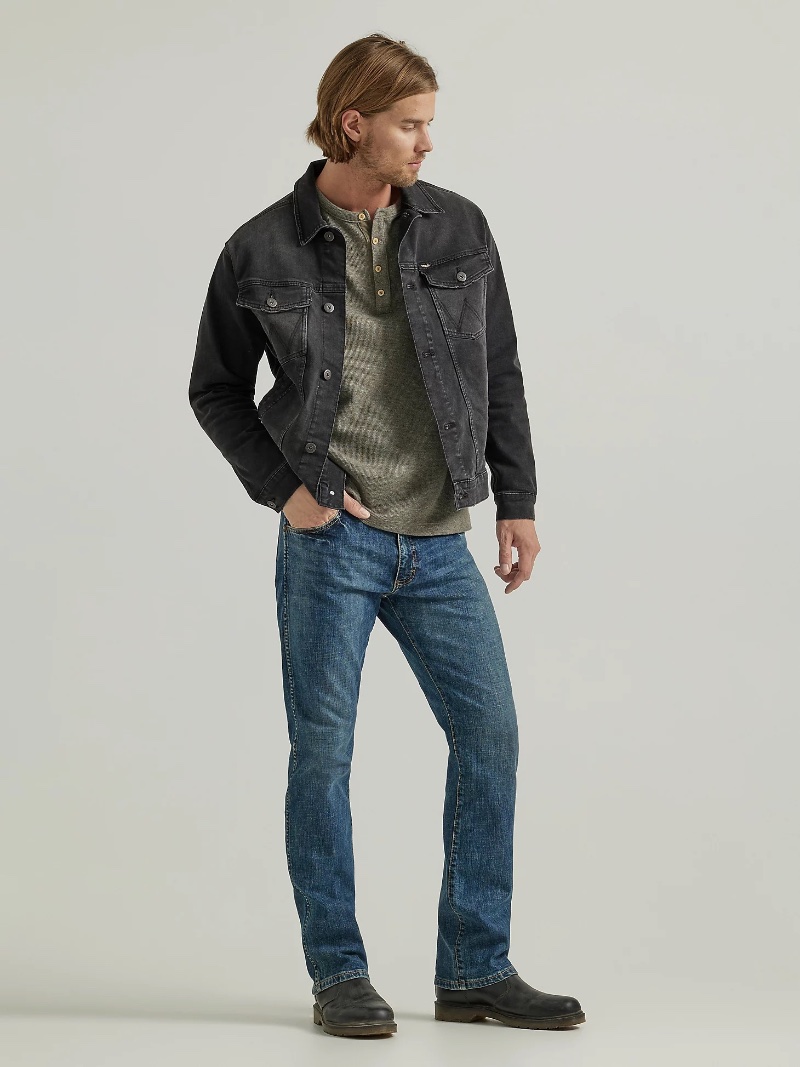
Bootcut jeans were designed with practicality in mind. Originally made to fit over cowboy boots, they keep a straight line through the thigh and then widen slightly from the knee down, allowing extra space around the ankle.
The result is a fit that leans casual and relaxed, easy to wear with everything from boots to low-top sneakers.
Flared Cut
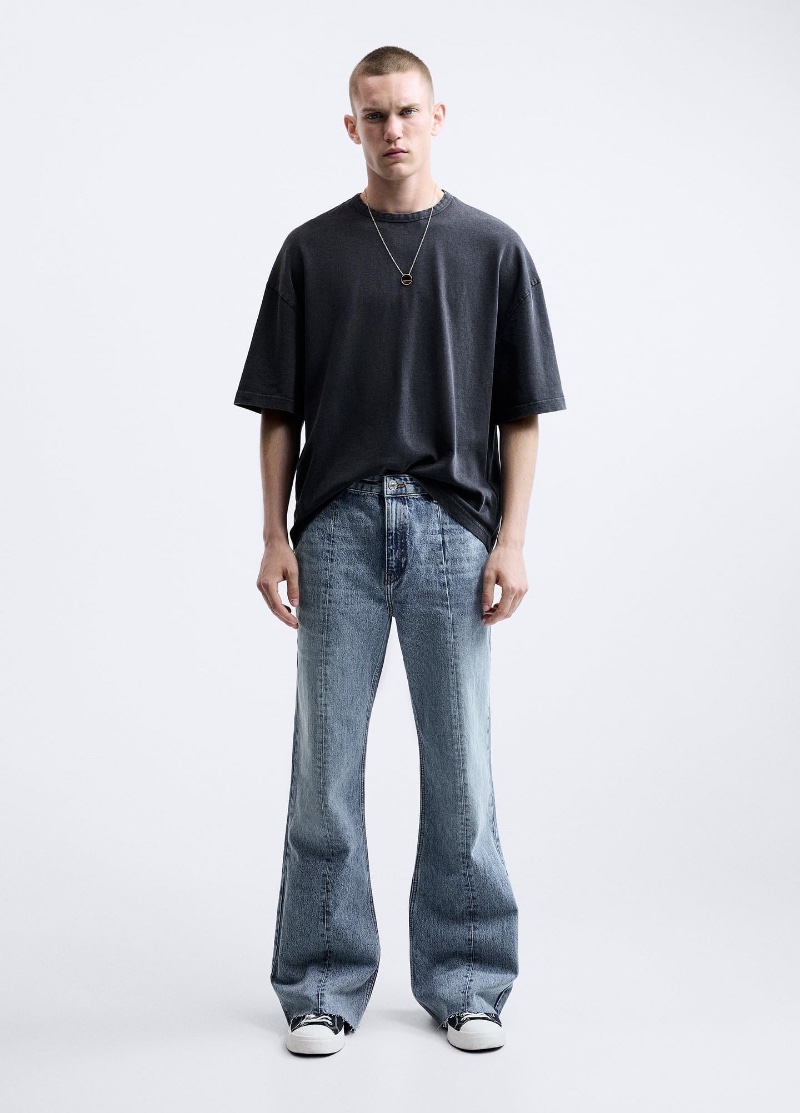
Flared cut jeans, a hallmark of ’70s style, widen sharply from the knee to the ankle to form a bold, bell-like shape. Their popularity rises and falls, but when styled with care, they bring a strong dose of vintage character to any look.
Tapered Cut
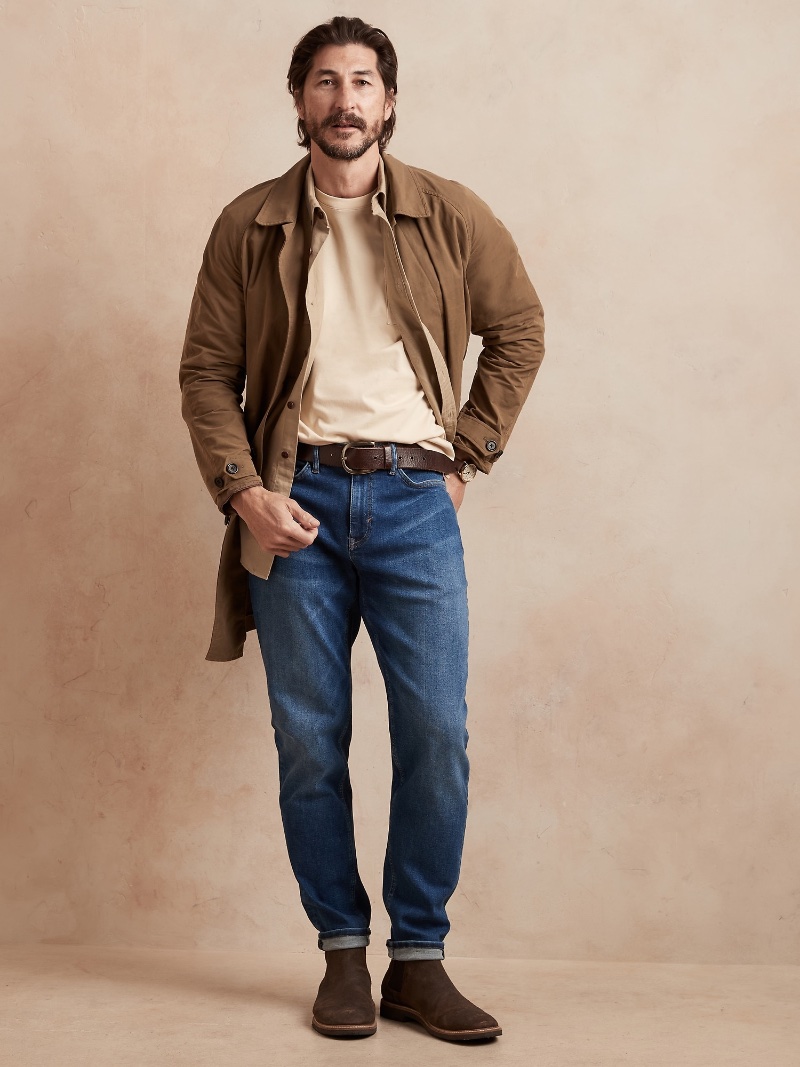
Tapered cut jeans, sometimes called carrot cut, offer a mix of room and shape. They start wider at the hips and thighs, then narrow down to the ankles for a clean, modern finish. This fit works across body types and adds shape without feeling restrictive.
Skinny Cut
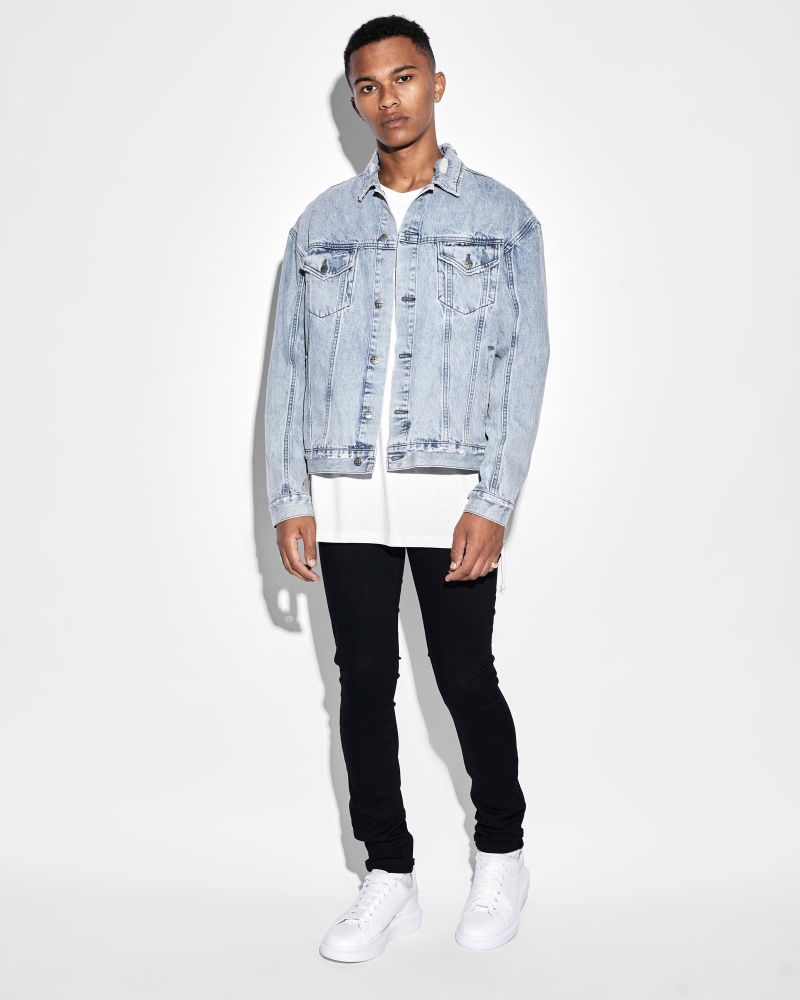
Skinny cut jeans follow the leg closely from waist to ankle, creating a sharp, fitted silhouette. They highlight the shape of the legs and offer a bold, modern look. Best suited for slimmer or athletic builds, this cut adds a sharper edge to casual and going-out outfits alike.
Denim Fabric
Whether denim is a daily uniform or an occasional go-to, knowing the fabric behind your jeans adds clarity to your choices and sharpens your style instincts.
Cotton Denim
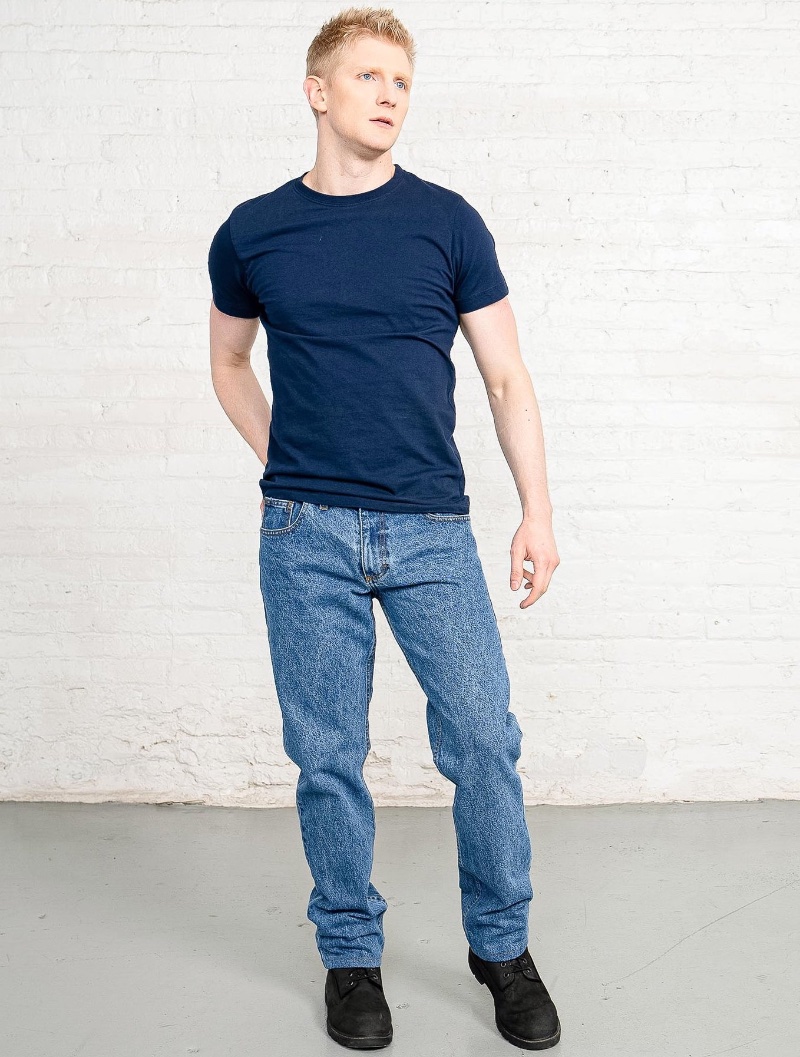
Rooted in tradition, 100% cotton denim delivers a classic feel with lasting durability. Its natural stiffness softens over time, molding to the body and developing a distinct fade with wear.
This type of denim suits everything from rugged Western looks to lived-in street style, offering a blank slate that builds character with age.
Stretch Denim
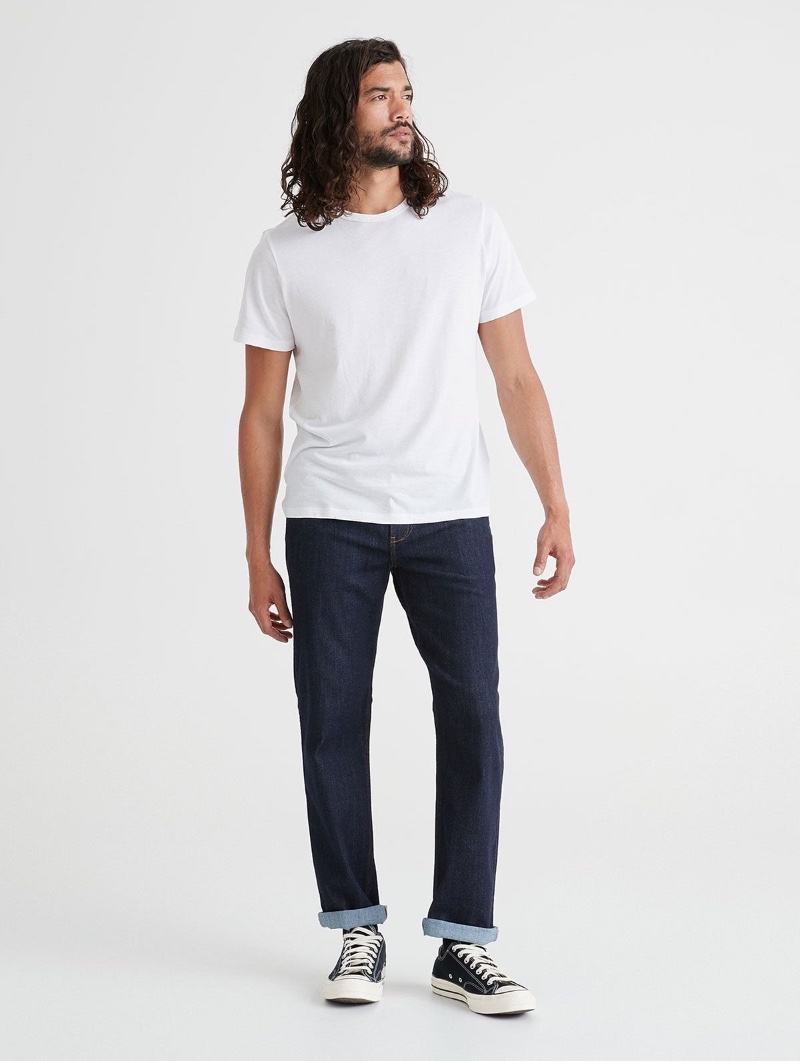
Add a touch of elastane to cotton and you get stretch denim, a modern update that brings flexibility to classic jeans. The added give allows for more movement and comfort, especially in slim or fitted cuts.
Stretch levels range from subtle to highly elastic. Each offers a different balance between hold and ease, depending on how much structure or softness you want in your denim.
Selvedge Denim
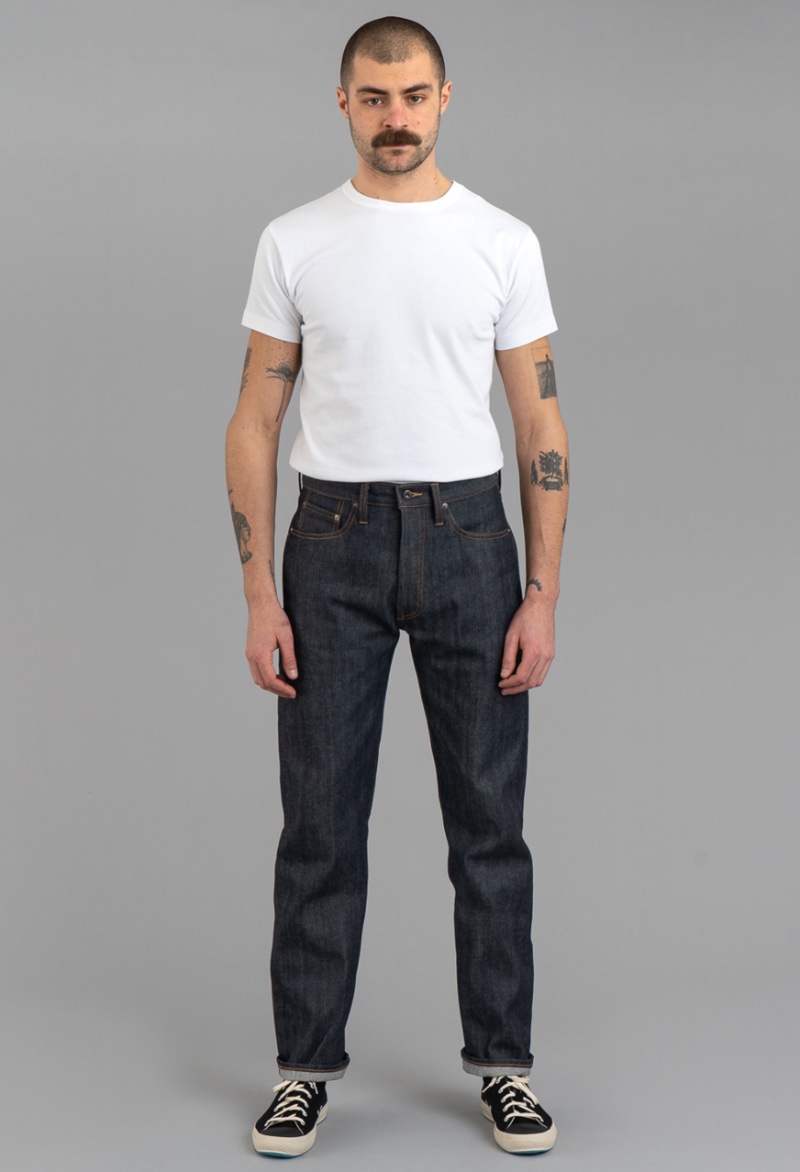
Selvedge, short for self-edge, refers to denim woven on traditional shuttle looms. This process creates a tightly bound edge that resists fraying and signals a higher level of craftsmanship.
Though often more expensive, selvedge denim offers long-term durability and a break-in process that leads to a fade pattern unique to the wearer.
Brand Specific Fabrics
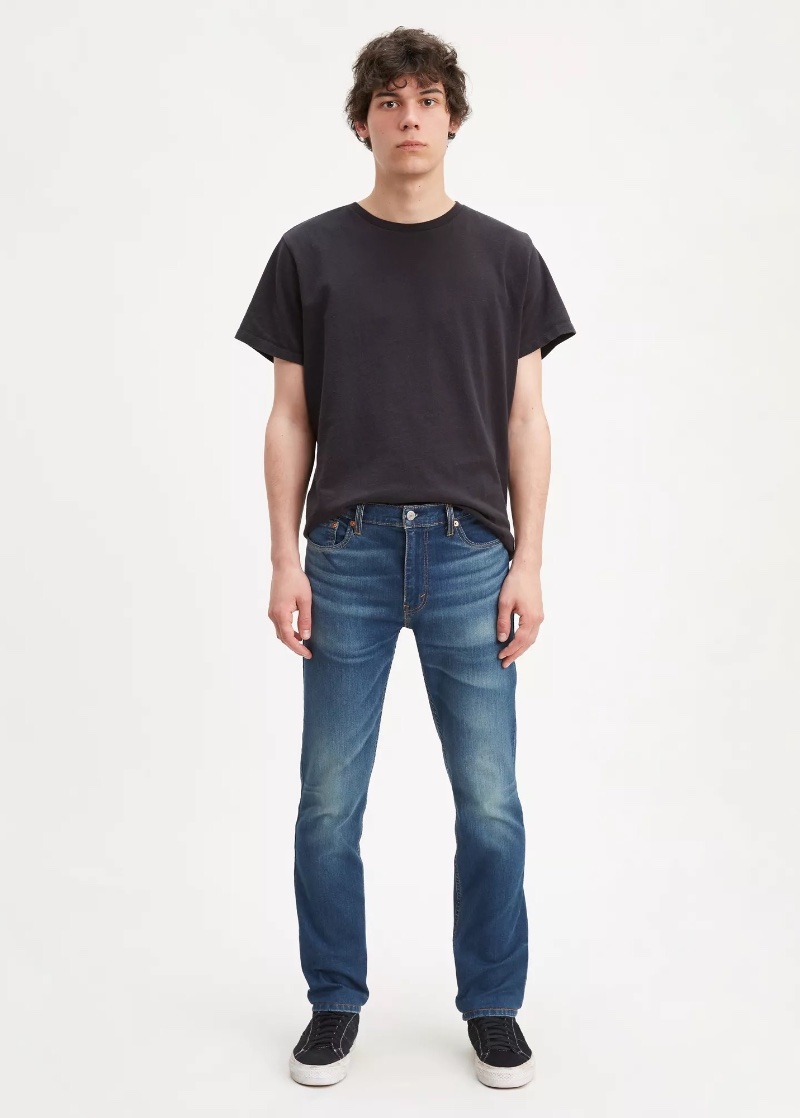
Many labels use their own denim blends, expanding what jeans can be. From innovative stretch fabrics to eco-conscious materials, these variations affect everything from fit and feel to how the jeans wear over time.
No two pairs are exactly alike. The fabric each brand uses plays a key role in shaping that difference.
Fabric Weight
In denim terms, weight refers to the fabric’s heaviness, measured in ounces per square yard. Lightweight denim, under 12 oz, feels easier on the body and works well in warmer weather. Heavier denim, over 16 oz, offers more durability and develops strong, defined fades with wear.
Exploring Denim Washes
In the varied world of denim, the wash shapes the character of your jeans. It refers to the treatment process that alters the color, texture, and finish of the fabric.
Raw or Dry Denim
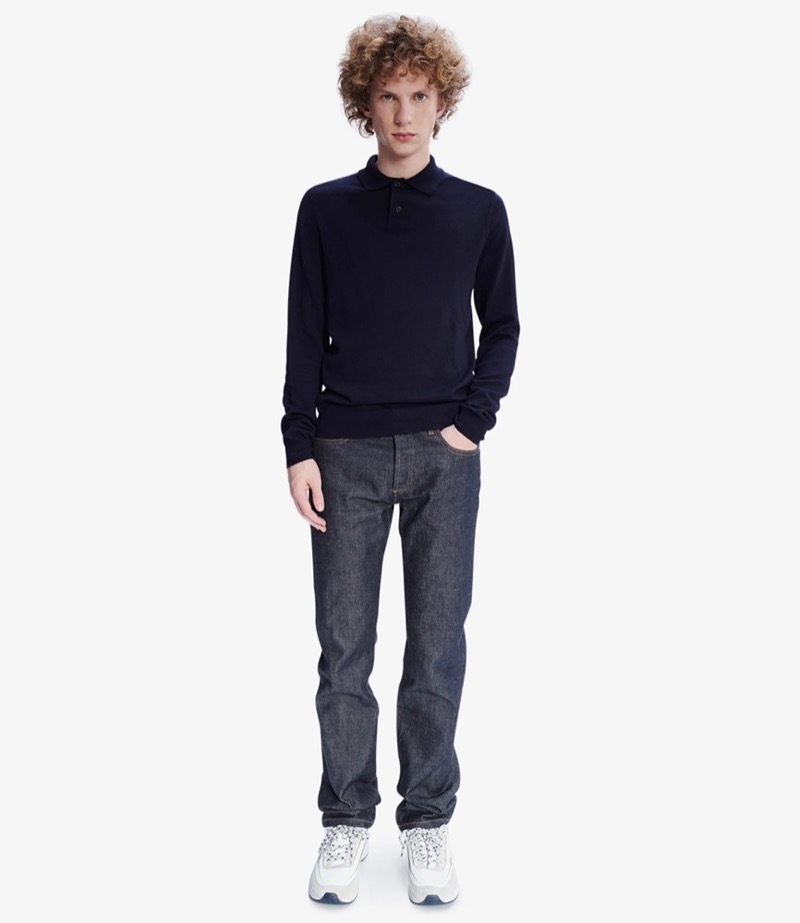
Raw or dry denim is the purest form of the fabric. With no washing applied after dyeing, the jeans retain their deep indigo color and stiff texture straight from the loom. Heavier and more rigid at first, raw denim gradually softens and forms wear patterns that reflect how and where it’s worn, creating a personalized fade over time.
Stone Wash
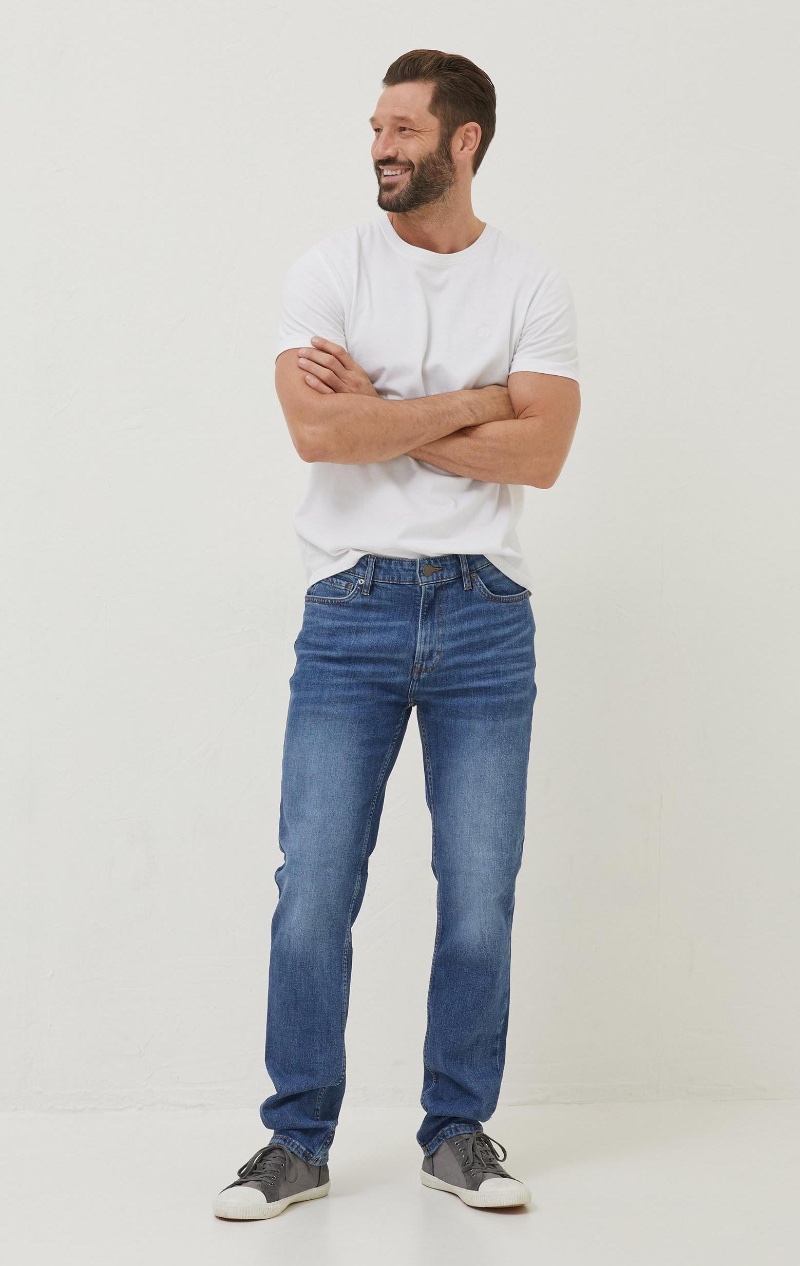
Stone wash denim offers a worn-in feel right from the start. The fabric is washed with pumice stones, creating a faded look and soft texture that mimics years of wear. The result is a pair of jeans with a vintage character and broken-in comfort from day one.
Acid Wash
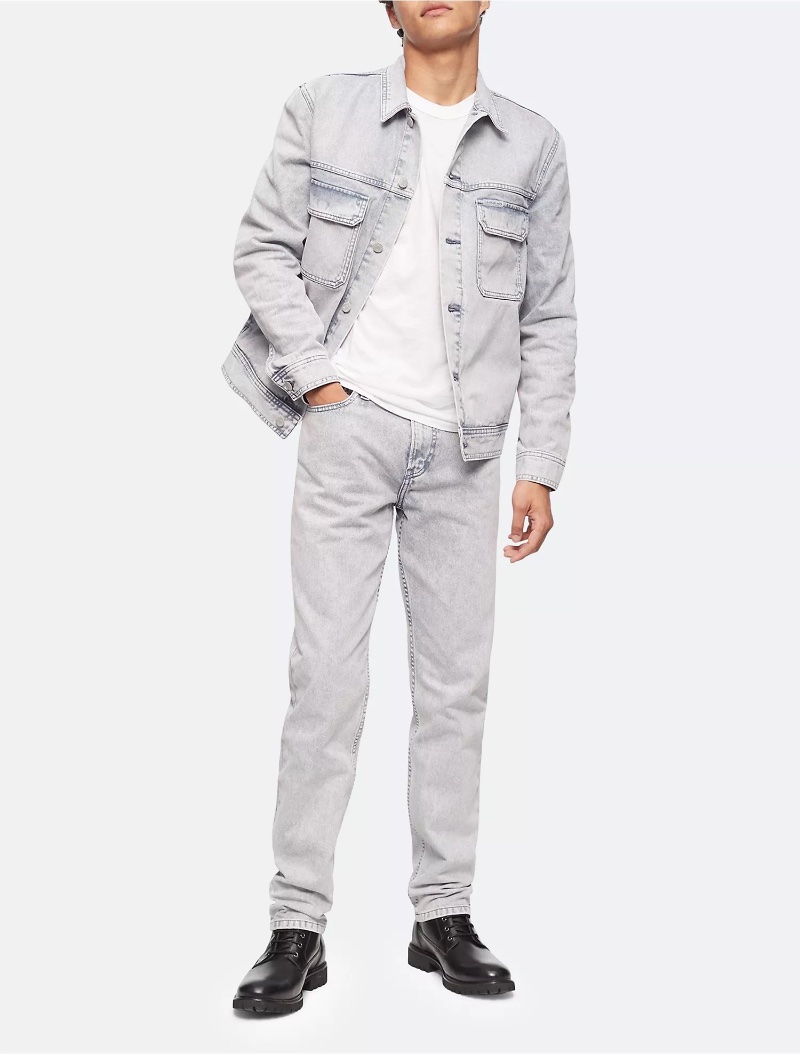
Acid wash denim makes a bold statement. Treated with pumice stones and a chlorine solution, the process strips away patches of indigo to reveal sharp contrasts with the white threads beneath. Popularized in the 1980s, this bleach-splattered look still adds a punch of attitude to any denim lineup.
Rinse Wash
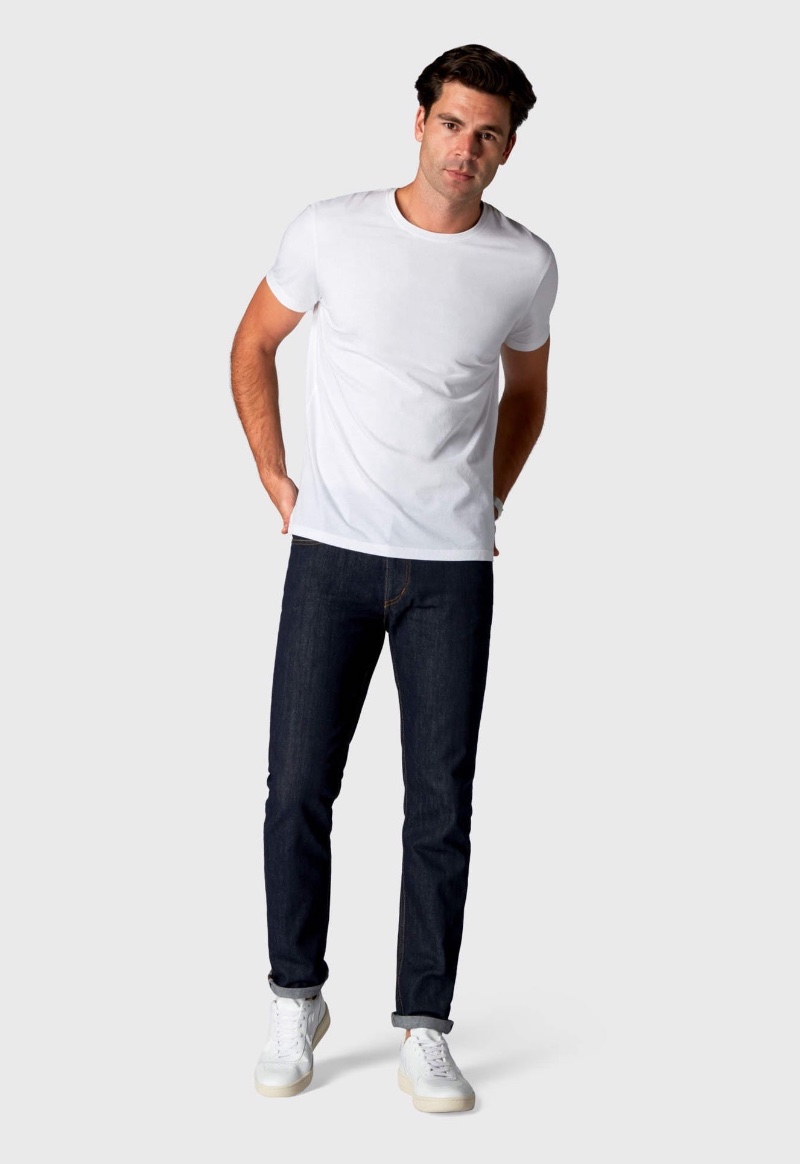
Rinse wash is a simple, low-intervention treatment that preserves the essence of raw denim. The fabric is rinsed in water to remove excess dye, softening the jeans while helping to reduce shrinkage. The result is a clean, dark finish that feels broken in without sacrificing depth of color.
Vintage or Distressed Wash
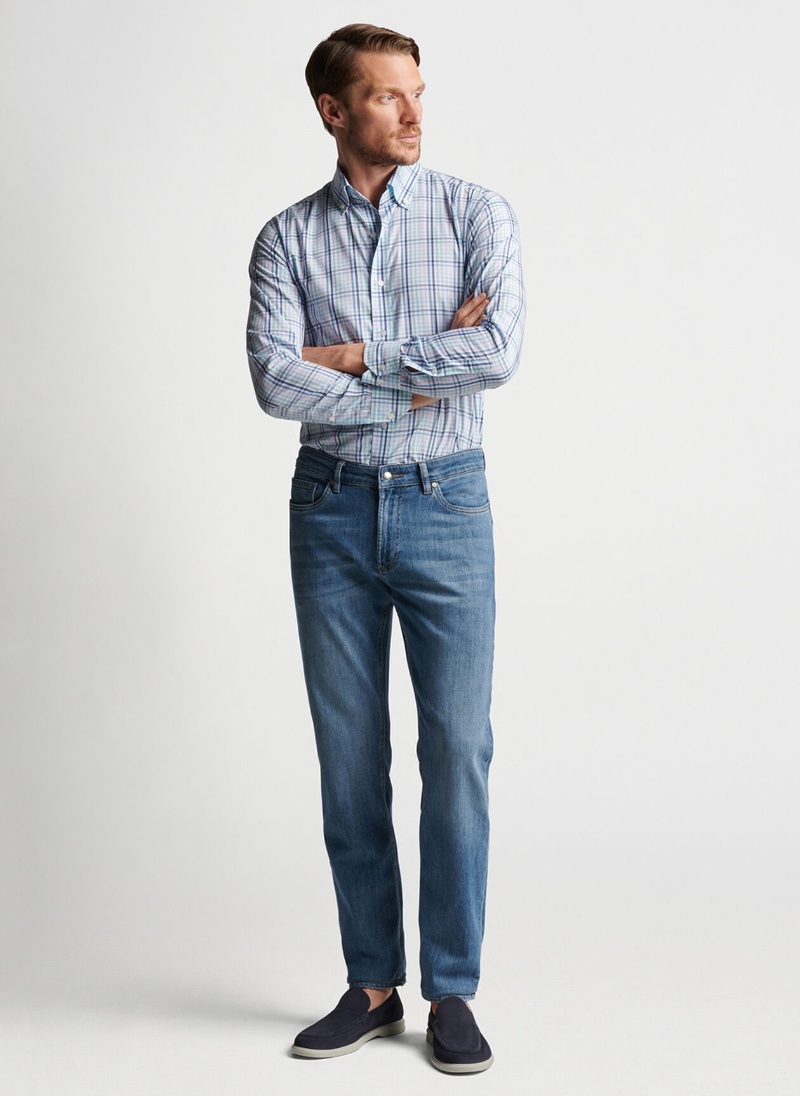
For a rustic, lived-in look, vintage or distressed wash is the way to go. Techniques like sanding, tearing, or light bleaching give the denim an aged feel, adding texture and a sense of history. These jeans bring instant character, as if they’ve already logged years of wear.
Dirty Wash
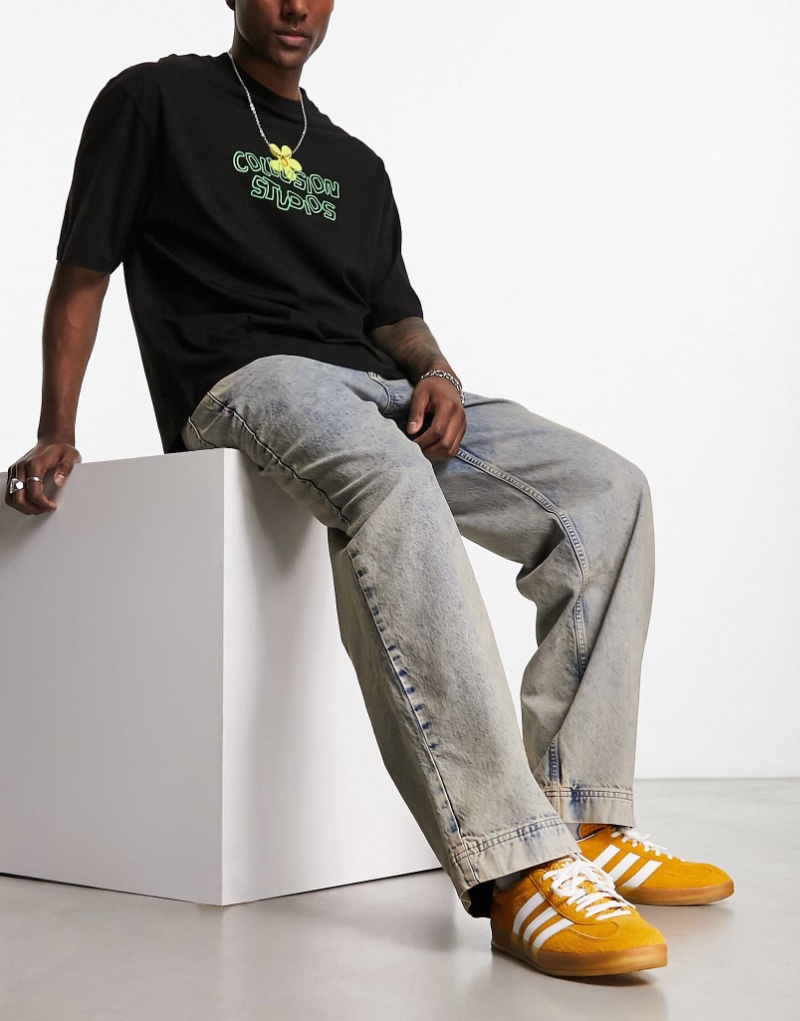
Dirty wash denim brings a gritty edge to classic blue jeans. A yellow or brown tint is added during the wash process, giving the fabric a worn, slightly stained look. The result reflects a grunge-inspired aesthetic that feels raw and unapologetic.
Black or Grey Wash
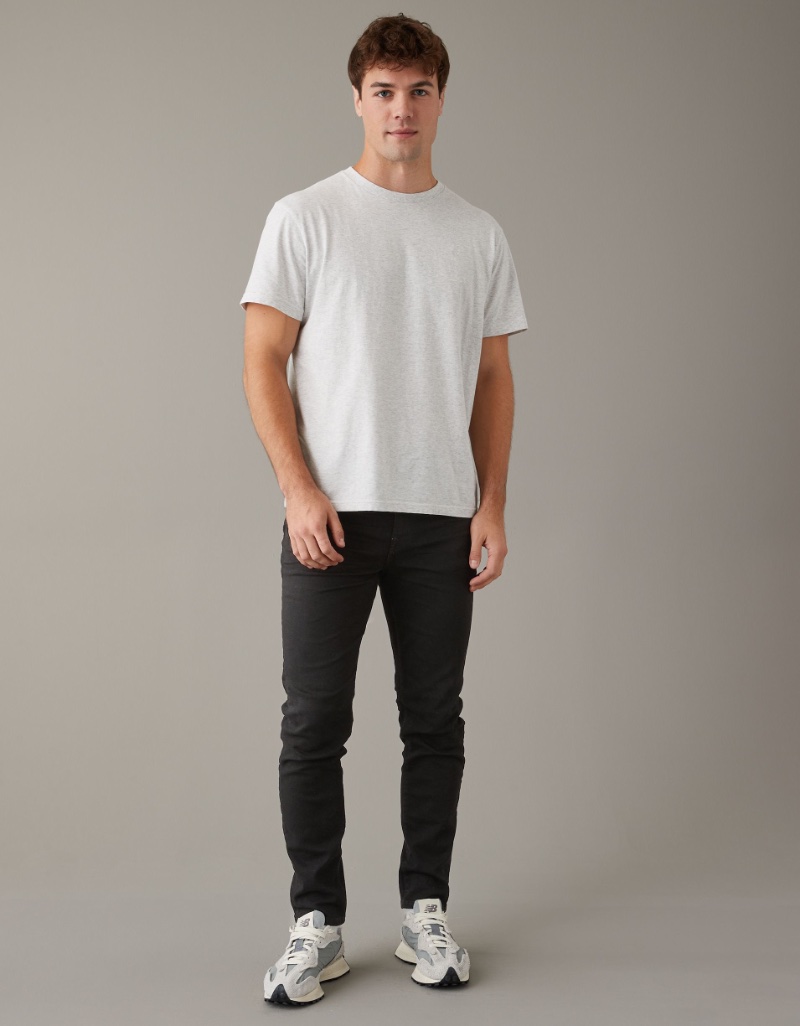
Black or grey wash jeans offer a break from classic blue, introducing a monochromatic palette into the mix. Depending on the treatment, the color can range from deep black to soft, washed-out grey, adding versatility and a more modern edge to your denim lineup.
White Jeans
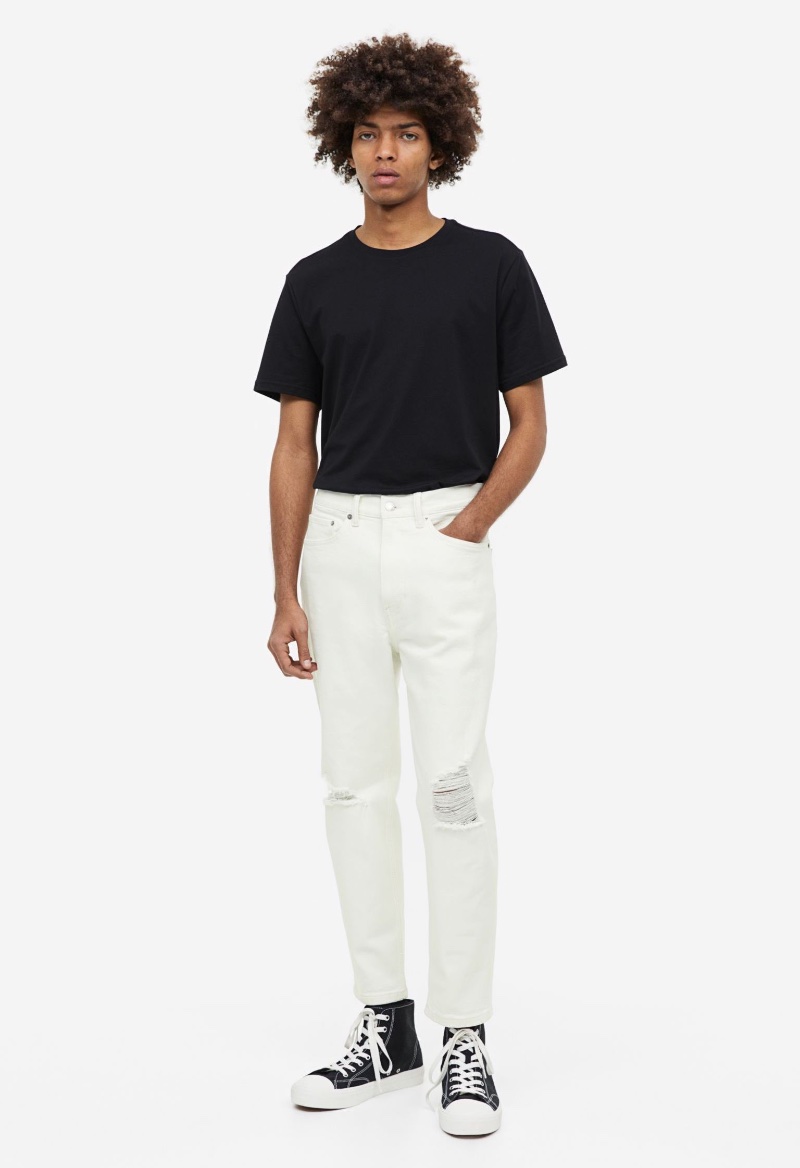
White jeans offer a sartorial reset, standing apart in a landscape dominated by washes and treatments. Free from dye and fade, they arrive as a blank canvas with sharp impact.
A well-executed white jeans outfit brings clarity to casual dressing and works especially well in warmer months with loafers, light knits, or an open shirt.
Denim Fit: Waist & Inseam Sizing
Knowing your waist and inseam measurements is key to finding jeans that fit well and feel right. These two numbers define your size and shape how the jeans sit on your body.
The first number is the waist, measured around your midsection. The second is the inseam, which runs from the crotch to the bottom hem. Together, they determine both comfort and proportion.
The Waist Measurement
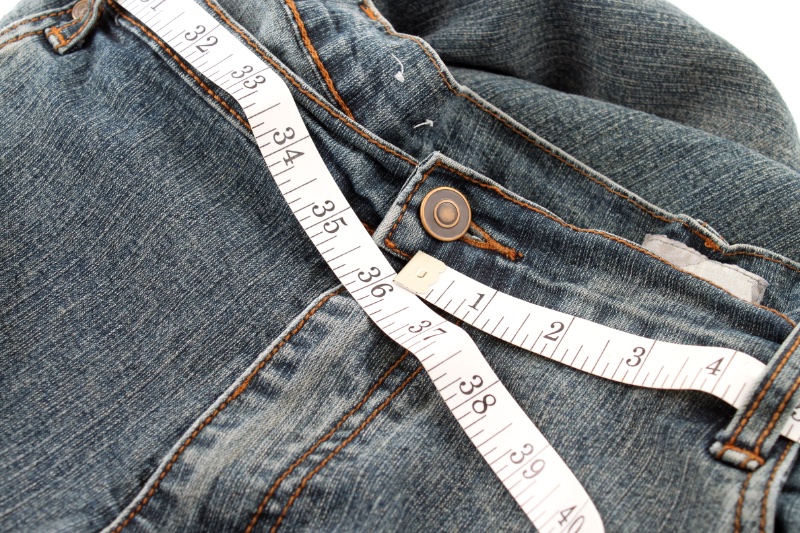
The waist size measures the circumference of the jeans at the point where they sit on your body, usually noted in inches. Most men’s jeans range from size 28 to 40, and the right number depends on how high or low you like your jeans to sit and how fitted you want them to feel.
Too tight, and the jeans pinch or pull. Too loose, and they lose shape and start to sag. To measure your waist, use a soft tape measure and wrap it around the spot where you prefer your jeans to sit.
Some men wear them higher near the natural waist, while others select a lower position on the hips. Keep the tape level and allow a finger’s width of space to avoid a restrictive fit.
The Inseam Measurement
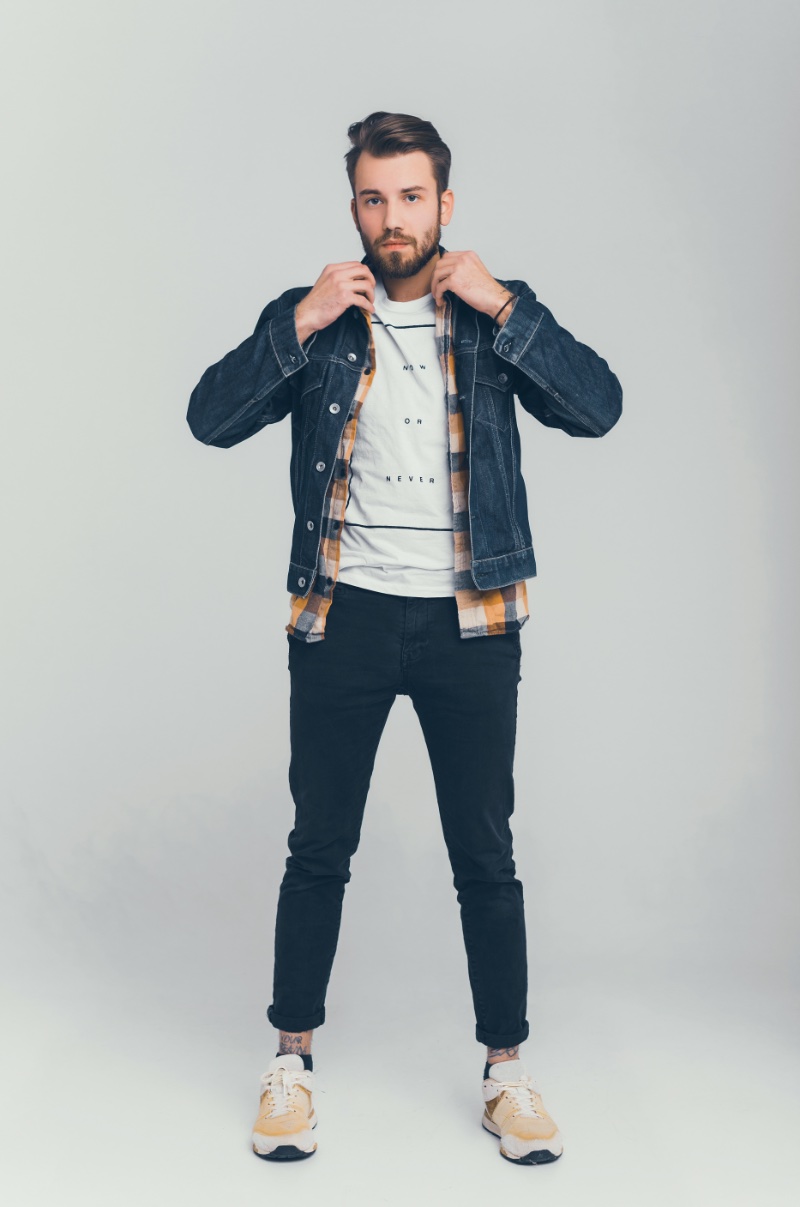
The inseam is the length of the jeans measured along the inner leg, from the crotch to the bottom hem. It affects where the jeans fall over your shoes and plays a major role in how the overall fit looks.
To measure your inseam, use a pair of pants that fit you well. Lay them flat and measure from the crotch seam straight down to the leg opening. The number you get in inches is your inseam.
The Break
Jean length affects the “break,” or how the fabric rests where it meets your shoes. Here are the three standard options, each creating a distinct look:
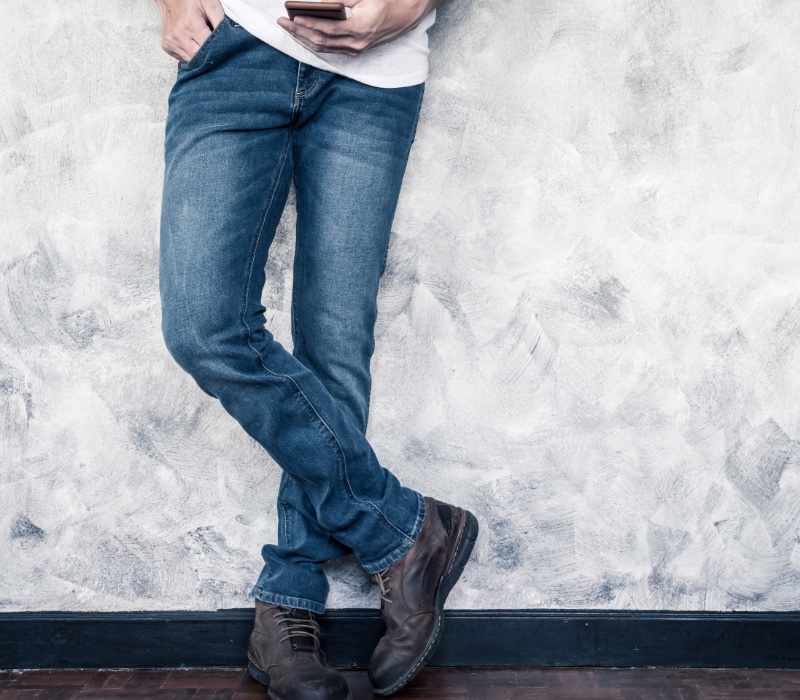
Full Break: For a more traditional look, a full break is the way to go. The jeans cover most of the shoe and form a deep crease near the ankle. This length works well with regular or relaxed fits.
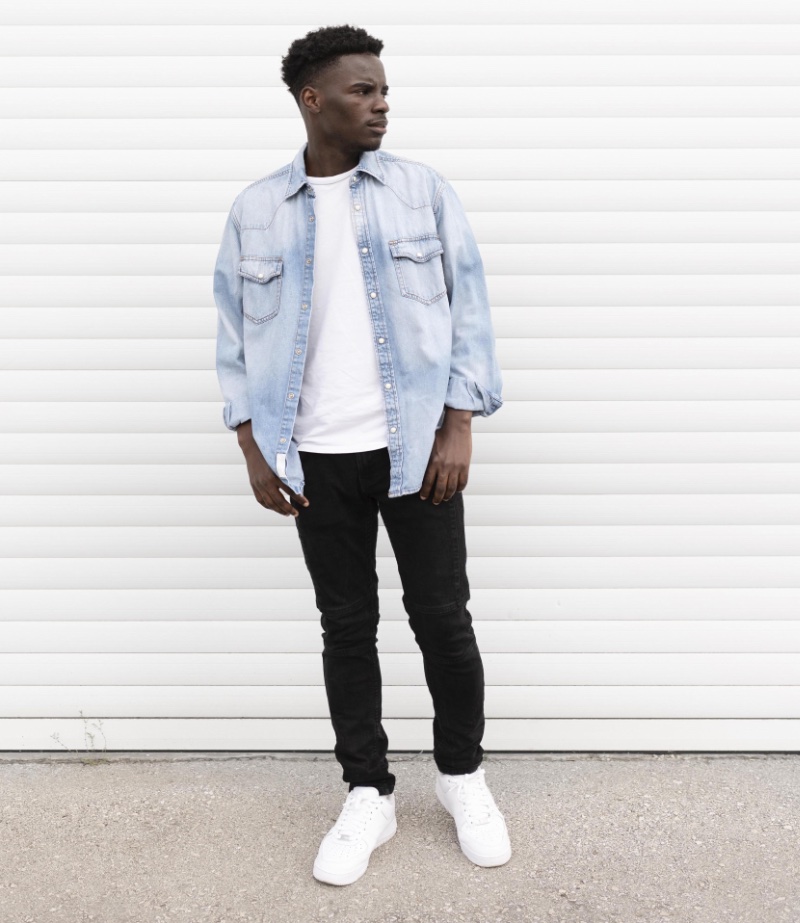
Half Break / Slight Break: For a modern and flexible look, go with a half or slight break. The jeans touch the top of your shoes, creating a small crease near the ankle. This length pairs well with most jean cuts and footwear styles.
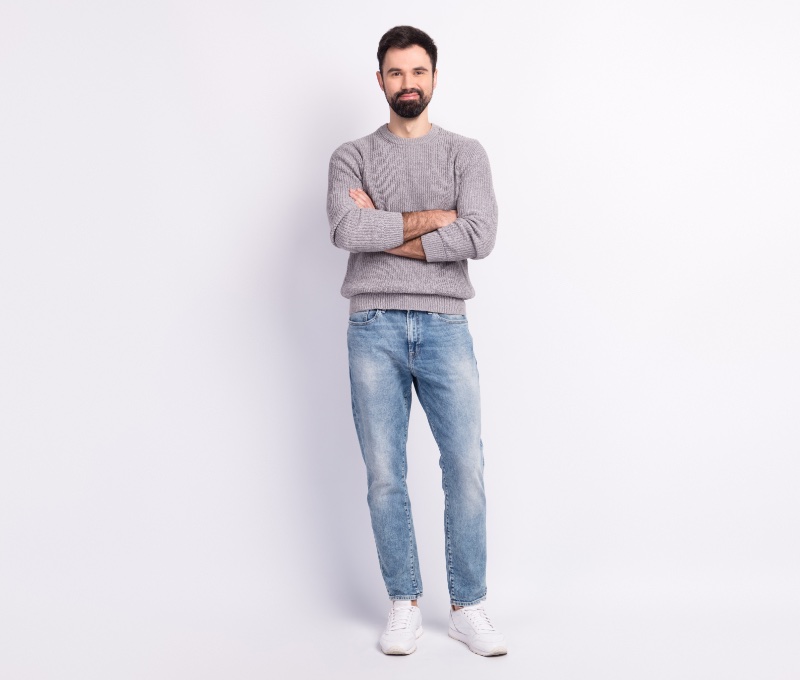
No Break: A no-break hem gives a sharp, contemporary finish. The jeans meet the top of your shoes without any creasing, keeping the lines clean. This style works best with slim or skinny fits and low-top footwear.
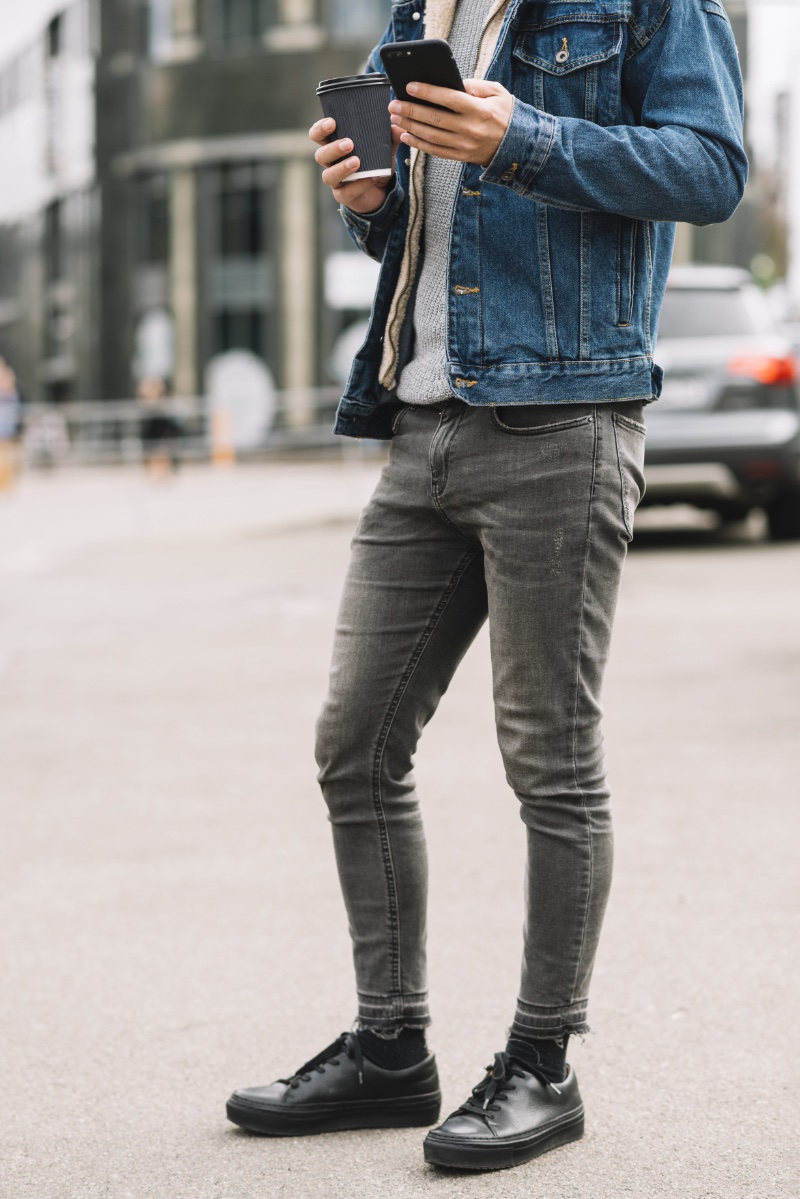
Cropped Jeans: Cropped jeans fall above the ankle and sit outside the standard break scale. The shorter length draws attention to your footwear and adds a modern appeal to casual looks.
Dream Denim
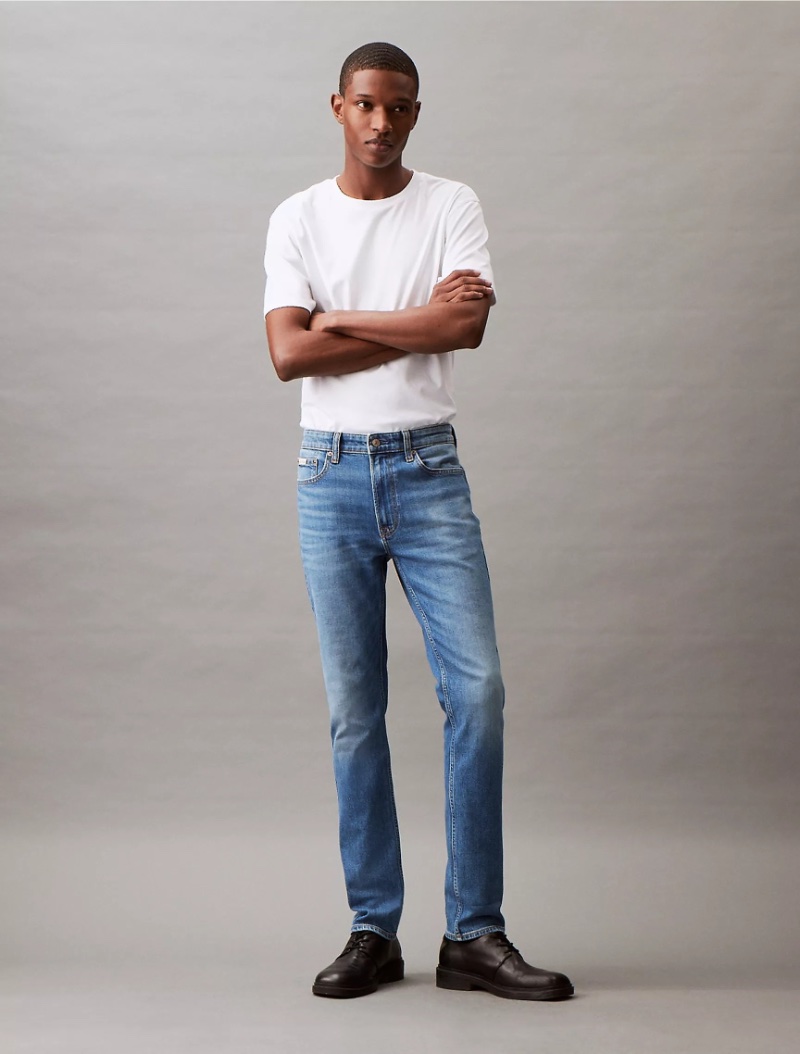
Denim remains a cornerstone of men’s style, offering a wide spectrum of fits, cuts, fabrics, and washes. Finding the right pair might seem like a maze, but with the right knowledge, it becomes a personal style ritual.
It comes down to how jeans sit on your body, how they’re cut, what they’re made from, and how they’re finished. Whether you go for bootcut or slim straight, raw or stretch, cotton or blend, the right pair balances comfort, shape, and attitude.
Care matters too. Knowing how to wash jeans properly helps preserve their fit and character, keeping them in rotation longer. The best jeans don’t follow trends. They follow your lead.
